

20 of the Most Accurate Sci-Fi “Predictions”
Grace Lapointe
Grace Lapointe’s fiction has been published in Kaleidoscope, Deaf Poets Society, Mobius: The Journal of Social Change, and is forthcoming in Corporeal Lit Mag. Her essays and poetry have been published in Wordgathering. Her stories and essays—including ones that she wrote as a college student—have been taught in college courses and cited in books and dissertations. More of her work is at https://gracelapointe.wordpress.com, Medium, and Ao3.
View All posts by Grace Lapointe
It’s fascinating to read books from decades or even centuries ago and discover details and technologies that subsequently came true — even indirectly. Most sci-fi authors don’t try to predict the future but instead satirize or comment on their own times. It’s especially ironic when some readers interpret an author’s warning or worst-case scenario as a wish or suggestion, but that’s part of the complexity of fiction. Samuel R. Delany said in an interview that sci-fi doesn’t predict the future but instead offers “significant distortion of the present.” Many other sci-fi authors have made similar statements, saying their extrapolations are not predictions.
I also want to distinguish between accurate sci-fi in general and sci-fi that correctly predicted the future. Hard science fiction (for example, Andy Weir’s The Martian ) is grounded in accurate technical details, but it tells stories that may or may not ever occur in real life. In contrast, the stories below offered scientific and social predictions, even if the authors weren’t trying to be prescient. These science and speculative fiction works captured or exaggerated the zeitgeist of their own times or the near future. It’s sometimes impossible to pinpoint the first person who ever developed an idea. Still, these authors’ fictional inventions and social changes ended up somehow anticipating the future.

Frankenstein by Mary Shelley
Mary Shelley’s 1818 novel, written when she was 17 , is widely considered the first science fiction novel. Although, some still debate whether it’s more of a horror or sci-fi novel. Some readers think it predicted future innovations from organ transplants to genetic engineering. Although I don’t think these are precise predictions, the book undoubtedly influenced many genres and made readers imagine scientific progress differently.
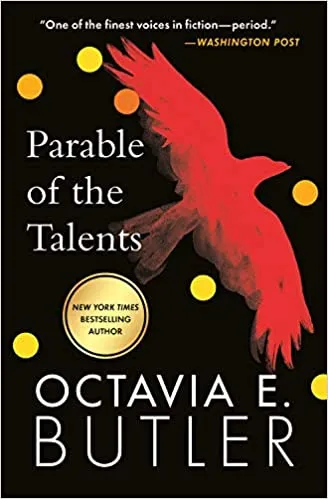
Parable of the Talents by Octavia Butler
During Donald Trump’s presidential campaign in 2016, several writers pointed out the similarities to Andrew Steele Jarret, a bigoted presidential candidate in Butler’s dystopian novel from 1998. Butler’s character even uses Trump’s slogan, “Make America great again.” Ronald Reagan also briefly used the slogan “Make America great again,” but Trump trademarked it decades later. In a speech at MIT, Butler said , “This was not a book about prophecy. This was a cautionary tale, although people have told me it was prophecy. All I have to say to that is: I certainly hope not.”
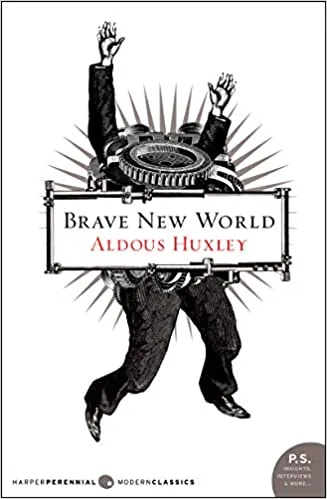
Brave New World by Aldous Huxley
In 2018 on BR , I noted that, 65 years before humans would clone mammals, this 1932 dystopian novel described cloning entire social classes of people through the “Bokanovsky’s Process.” I find the cloning process the novel’s most remarkable idea. Some readers, however, think that its mood-altering drug, Soma, was more prescient and anticipated antidepressants .
Thank you for signing up! Keep an eye on your inbox. By signing up you agree to our terms of use
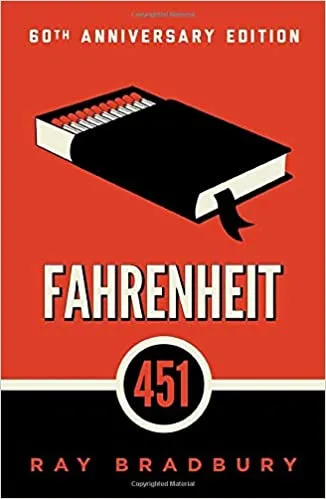
Fahrenheit 451 by Ray Bradbury
This 1953 dystopian novel contains in-ear listening devices called Seashells. People have recently compared these to Bluetooth and AirPod s. This is impressive, considering they even predate stereo headphones, and transistor radios were new technology then. The novel’s other innovations include flat-screen TVs and banking machines, which resemble ATMs.

Snow Crash by Neal Stephenson
When Facebook changed its name to Meta in 2021, several people pointed out that Neal Stephenson coined the word Metaverse in his 1992 cyberpunk novel. Like many other examples in this article, Stephenson’s Metaverse is dystopian. Snow Crash ’s characters are so poor that virtual reality seems preferable to their bleak lives and tiny living spaces. So, I think Meta’s claim that people will enjoy playing, shopping, and working in their Metaverse seems bizarre and deeply ironic.
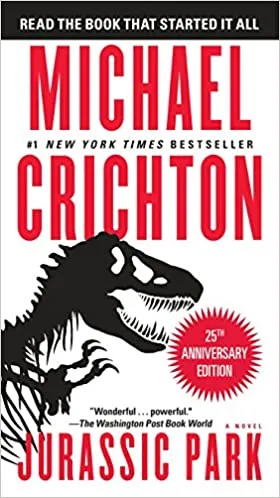
Jurassic Park by Michael Crichton
This bestselling 1990 novel and its blockbuster 1993 movie imagine scientists cloning dinosaurs from reconstructed DNA fossilized in amber. All the books and movies clearly warn that this would be a terrible idea. Still, as recently as 2021, scientists announced their desire to clone prehistoric animals. We’ve seen this story before. So, what’s the worst that could happen? Maybe we should listen to Dr. Ian Malcolm’s warnings.
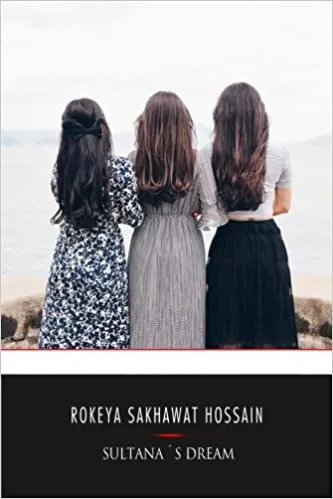
Sultana’s Dream by Rokeya Sakhawat Hossain
In 1905, the Bengali writer and feminist activist also known as Begum Rokeya wrote about a fictional, futuristic society: a feminist utopia, ruled exclusively by women. She also imagined video calls, flying cars, and solar power long before other sci-fi authors did. In 2019 on BR , Ann-Marie Cahill wrote about Begum Rokeya and other underrated science fiction writers.

The Minority Report by Philip K. Dick
In this 1956 novella, some characters can use machines to predict crimes. So-called criminals are arrested preemptively, before crimes can even occur. The book anticipated the increase in surveillance and profiling around the time of the movie adaptation, Minority Report , in 2002. Today, with algorithms trying to predict people’s habits, increased surveillance technology, and even iris and retinal scans, it seems more prescient than ever.
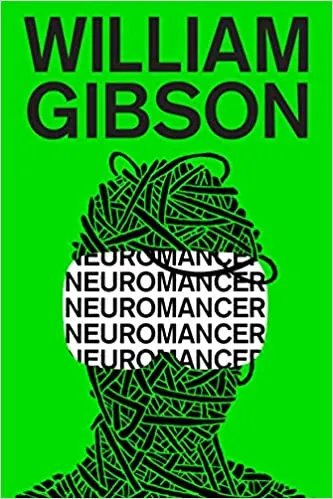
Neuromancer by William Gibson
Gibson coined the term cyberspace in his 1982 short story “Burning Chrome.” He defined it as “widespread, interconnected digital technology,” which sounds just like today’s internet. Then, in his 1984 debut novel Neuromancer , he expanded on these ideas. A defining cyberpunk novel, it describes augmented reality and virtual reality headsets like those that Oculus Rift makes today. Gibson changed our ideas of the internet forever.

Babel-17 by Samuel R. Delany
This 1966 novel explores the relationship between language and thought. Today, it’s often paired with Delany’s novella Empire Star , as he originally intended. Babel-17 doesn’t predict a specific event, but today’s scientists have more evidence of the ways language can shape our thoughts . Many of the “stronger” versions of the Sapir-Whorf hypothesis in which Delany believed at the time have been largely discredited, but linguists and neuroscientists still study how language and culture form our thoughts in complicated ways.
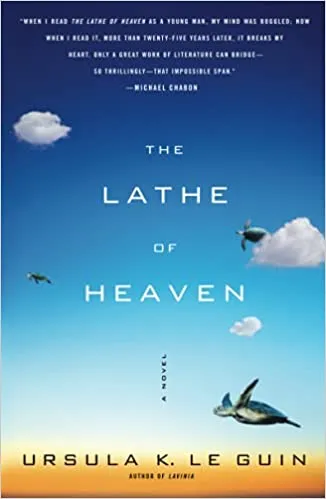
The Lathe of Heaven by Ursula K. Le Guin
When an unethical psychotherapist learns that one patient’s dreams can alter reality, he manipulates the patient’s dreams for his own ends. This book is set in 2002, when the polar ice caps are melting, temperatures are rising due to greenhouse gases, and there’s a long war in the Middle East. Although scientists had known for decades that carbon emissions could cause global warming, Le Guin’s 1971 novel is still eerily accurate, considering what 2002 was really like. It’s also about gradual abuses of power and boundaries.

Akira by Katsuhiro Otomo
This 1982 manga series contains a strangely specific prediction. The 2020 Olympics are held in Tokyo, during an epidemic, while protesters call for them to be cancelled. In real life, the 2020 Olympics, in Tokyo, were postponed until 2021 due to the COVID-19 pandemic. In 2020, theories that this manga and its 1988 film adaptation predicted the COVID-19 epidemic were highly exaggerated. References to epidemics are not central to the plot, but it’s a striking coincidence.
“Spider The Artist” by Nnedi Okorafor
This short story published online in 2011, by the author of Binti and Who Fears Death , deals with domestic violence, technology, and colonialism. In the story, oil companies create robots to guard their pipelines, and a woman unexpectedly befriends one of these robots. Today, robots on pipelines are part of the trend to automate the dangerous work of human employees. The commercial use of technology developed for the military (for example, drones) has also increased since the story’s publication.
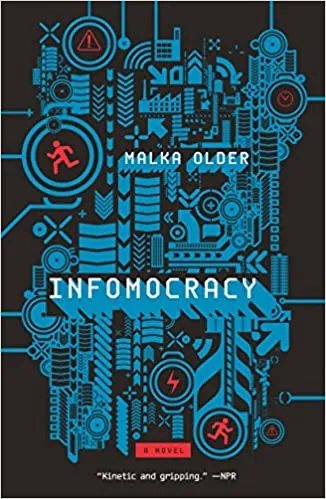
Infomocracy by Malka Older
This sci-fi novel depicts a future where information technology completely controls politics. It was published in June 2016, just months before the 2016 Presidential election. After the election, when the public learned that Cambridge Analytica had used Facebook ads to micro-target voters, many people called the book prescient. However, in 2017, Older wrote that she was “not predicting the future, just observing the present .”

Woman on the Edge of Time by Marge Piercy
This 1976 novel predicts the popularity of minor, cosmetic procedures, like lip fillers. It also foreshadows huge political changes, including the increased influence of corporations in politics. It anticipates the 2010 Supreme Court ruling Citizens United , which gave corporations and super PACs unprecedented influence over elections. It also predicts civil rights protections for LGBTQIA people.
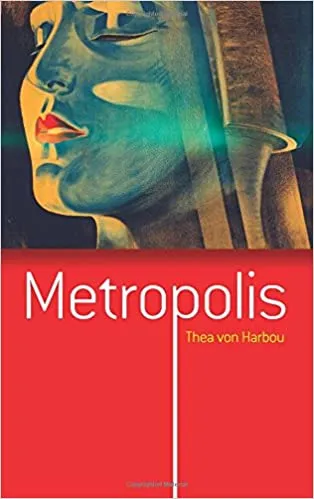
Metropolis by Thea von Harbou
Thea von Harbou and her husband, Fritz Lang, adapted her 1925 novel into the 1927 film, also called Metropolis . The book and movie envisioned androids, human-like robots, long before scientists would create them. They’re also considered prophetic for their critiques of capitalism.

All You Need is Kill by Hiroshi Sakurazaka and Yoshitoshi ABe
This Japanese science fiction light novel from 2004 features robotic, powered exoskeletons, used by the military. By 2015, powered exoskeletons were used as assistive devices to help people walk, although they’re still inaccessible and prohibitively expensive to many disabled people. Previous attempts to create exoskeletons for military use were unsuccessful. The novel inspired the 2014 U.S. movie Edge of Tomorrow .
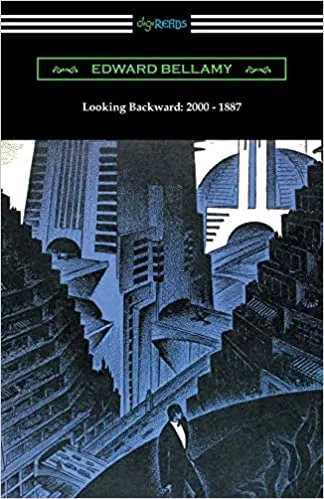
Looking Backward: 2000–1887 by Edward Bellamy
Bellamy was the first person to coin the term “credit card” in 1888. The first real credit card would not be invented until 1950 — 62 years later. The protagonist of this novel falls asleep for 113 years, Rip van Winkle -style. He wakes up in the year 2000, in a utopian society. Here, people buy items on credit in stores resembling a modern wholesale clubs like BJ’s or Costco. Bellamy’s ideas generated a lot of discussion soon after publication.
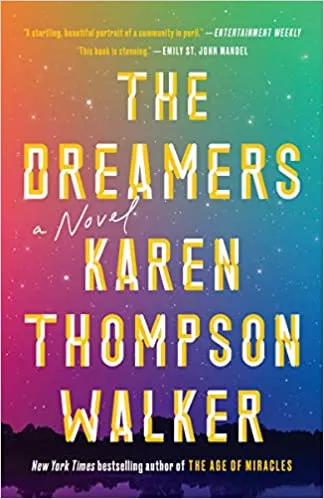
The Dreamers by Karen Thompson Walker
Published in 2019, this novel has some eerie parallels to the COVID-19 pandemic. A new, highly contagious virus appears suddenly, people buy face masks to contain the spread, and a town is quarantined. Some people believe the virus is a hoax. People even have heightened, vivid dreams in the novel, which many people have reported during the COVID pandemic.
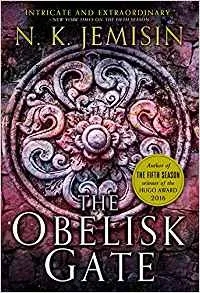
The Obelisk Gate by N. K. Jemisin
Spoilers ahead: the second volume of the Hugo- and Nebula winning Broken Earth trilogy , from 2016, reveals that people called Guardians control their charges through metal implant s in the Guardians’ brains. In 2019, Elon Musk said his company Neuralink could “solve” disabilities by implanting AI chips in disabled people’s brains. Disabled people, including me, called out Musk’s plans as dangerous and ableist. I tweeted a comparison to the fictional implants , which are oppressive, violating, and a source of generational trauma in the books.
But are these really predictions?
It’s debatable, but I don’t think so. Most of them are interesting coincidences or astute observations of the authors’ present. In William Gibson’s case, for example, he influenced the future as much as he predicted it. The goal of sci-fi is not prediction but imagining stories free of constraints. Authors aren’t oracles and usually aren’t trying to predict anything. For every vision of the future that seems prophetic, there are others that end up absurdly inaccurate or dated.
You Might Also Like

- Skip to Nav
- Skip to Main
- Skip to Footer
When Science Fiction Becomes Reality: Writers' Predictions That Came True
Please try again

The illustrious science fiction writer Ray Bradbury loved to tell a certain story during interviews: when he was in his 30s and lived in New York, all his contemporaries liked to laugh at him at their fancy dinner parties over his seemingly far-fetched ideas. Bradbury kept all their phone numbers and, after the first moon landing, he called many of them, laughed and hung up, happy that his fantasy of space exploration had finally become a reality.
This is just one instance of a science fiction writer anticipating future technology or lifestyle changes here on Earth, both large and small. The following authors are a testament to the power of human imagination and how it can help inspire a whole new way of doing things.
Early Advancements:
• Edward Bellamy: It’s hard to imagine that someone in 1888 was wondering how modern society would spend their money. But Bellamy’s popular novel Looking Backward introduced the idea of “universal credit” and paved the way for advancements in shopping…and millions of people in credit card debt.
• H.G. Wells: Often called the “father of science fiction,” Wells is known for coining the term “atomic bomb,” anticipating the creation of tank warfare, laser weapons, and more ordinary items like the automatic door and pest-resistant plants.
• Jules Verne: Sure, he’s best known for his classics – Journey to the Center of the Earth, Twenty Thousand Leagues Under the Sea , and Around the World in Eighty Days , but some of his other works like From the Earth to the Moon and Paris in the Twentieth Century predicted such advancements as the submarine and the lunar landing.
Popular Electronics:
• Ray Bradbury: There’s a reason he’s a legend of the genre. In his seminal novel, Fahrenheit 451 , Bradbury’s description of “little seashells….thimble radios” which were responsible for an “electronic ocean of sound, of music and talk” certainly seemed to anticipate one of the most used technologies of the 2000s: the earbud. The Martian Chronicles also warned against some of the repercussions of nuclear warfare.
• Arthur C. Clarke: Not just a popular film, 2001: A Space Odyssey is also a fascinating book, which offers a description of a device called a “newspad” that is eerily similar to a modern tablet. Other Clarke predictions : mass transit and remote surgery (see video above). Additionally, a shorter manuscript was said to imagine a vast telecommunications satellite array that helped with television signals.
• William Gibson: Gibson coined the word “cyberspace” in an early short story, “Burning Chrome,” more than a decade before the World Wide Web was even invented. His seminal work, Neuromancer, offered a further glimpse into the world of the Internet and guessed, rightly, that there would be computer hackers in the future.
• David Brin: His 1990 book EARTH describes “21st-century characters using screen displays filled with clickable links—in other words, Web pages.” More than that, there’s an entire website devoted to the other aspects of life that Brin’s text got right.
Social Implications:
• George Orwell: While 1984 was published back in 1949, adaptations of the text are very relevant today as we continue to worry about privacy, surveillance and the presence of Big Brother-esque technology.
• John Brunner: His 1969 novel Stand on Zanzibar is often cited as an eerily accurate depiction of life in 2010. The novel depicts a President Obomi in a country where terrorist attacks and school violence are sadly routine. Brunner also predicted an acceptance of gays, satellite TV and electric cars.
So what will the authors of today anticipate? Only time will tell.

Thanks for signing up for the newsletter.

- Times Sci-Fi Writers Predicted the Future
- Inventions We Were Warned About
- The Real Reasons We Should Fear AI
- The Future Looks Grim
- Games That Made Good Predictions
- Vintage Ads That Made Predictions
- Embarrassing Predictions
- 11 Horrifying Fictional Dystopias That Keep Us ...
- What Sci-Fi Movies Will Be Wrong About (Probably)
- Predictions in Dystopian Novels
- Cool Fictional Dystopian Worlds
- Old Movies Whose Future We Passed
- Dystopian Films About Near Future
- What 11 Movies And TV Shows Get Right (And Wron...
- The Biggest AI Controversies In Pop Culture, Ra...
14 Times Science Fiction Writers Predicted the Future
All manner of people have made extraordinary future predictions throughout history, but science fiction writers seem to have a particular knack for getting things right. From Jules Verne to George Orwell, sci-fi writers have been frighteningly good at predicting what the future would hold. We may not be living in a dystopian or utopian society as many assumed, but there are plenty of aspects of today's society that make it seem like science fiction writers predicted the future.
H.G. Wells's time machine is still a matter of fiction, but that was only one of his several visions of the future. He had plenty of other predictions of the future that came true. Likewise, Ray Bradbury and Phillip K. Dick were hit and miss with their versions of the future. Some sci-fi authors made vague predictions that can certainly be interpreted as coming true, while others made decisive, intricate predictions that are startling accurate in hindsight.
Unlike Nostradamus, these writers weren't in the business of telling the future. They're all writers first and foremost, futurists who predicted the future second. Their writings reflect both realistic and fantastical versions of various futures they imagined, and their predictions are almost more impressive for that. Much of what these authors wrote was considered totally outlandish at the time, yet a considerable amount of it has come true.
George Orwell Predicted Big Brother
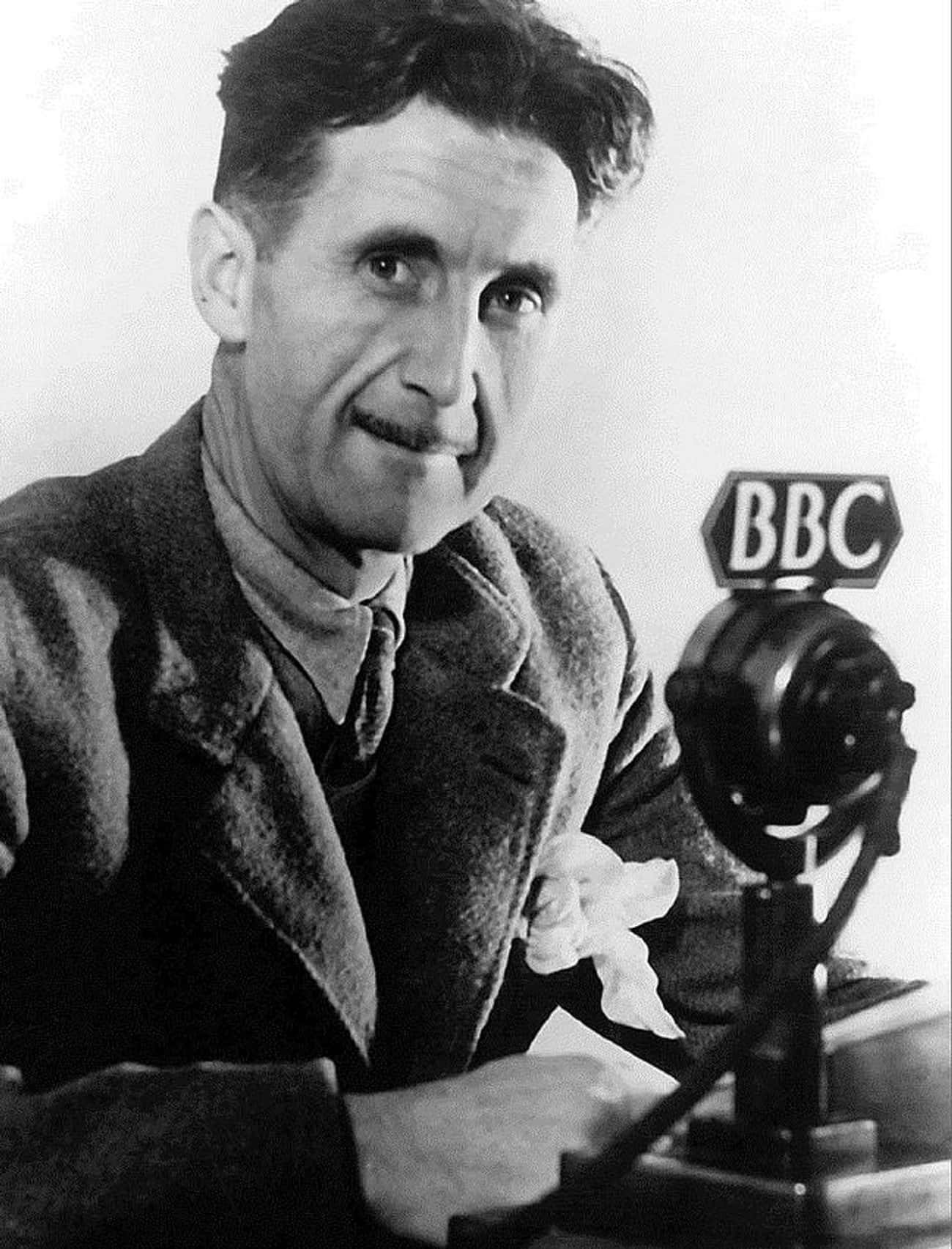
Big Brother was a lot more extreme in George Orwell's classic 1984 than it is today, but he still got a lot of things right. We may not have the thought police, but we do have CCTV cameras just about everywhere.
Add that to all the other ways companies and the government can monitor citizens - from phone calls to online activity - and you've got a veritable surveillance state. In China, where things like the Internet are highly moderated and monitored, 1984 is even more foreboding.
Jules Verne Predicted the Moon Landing
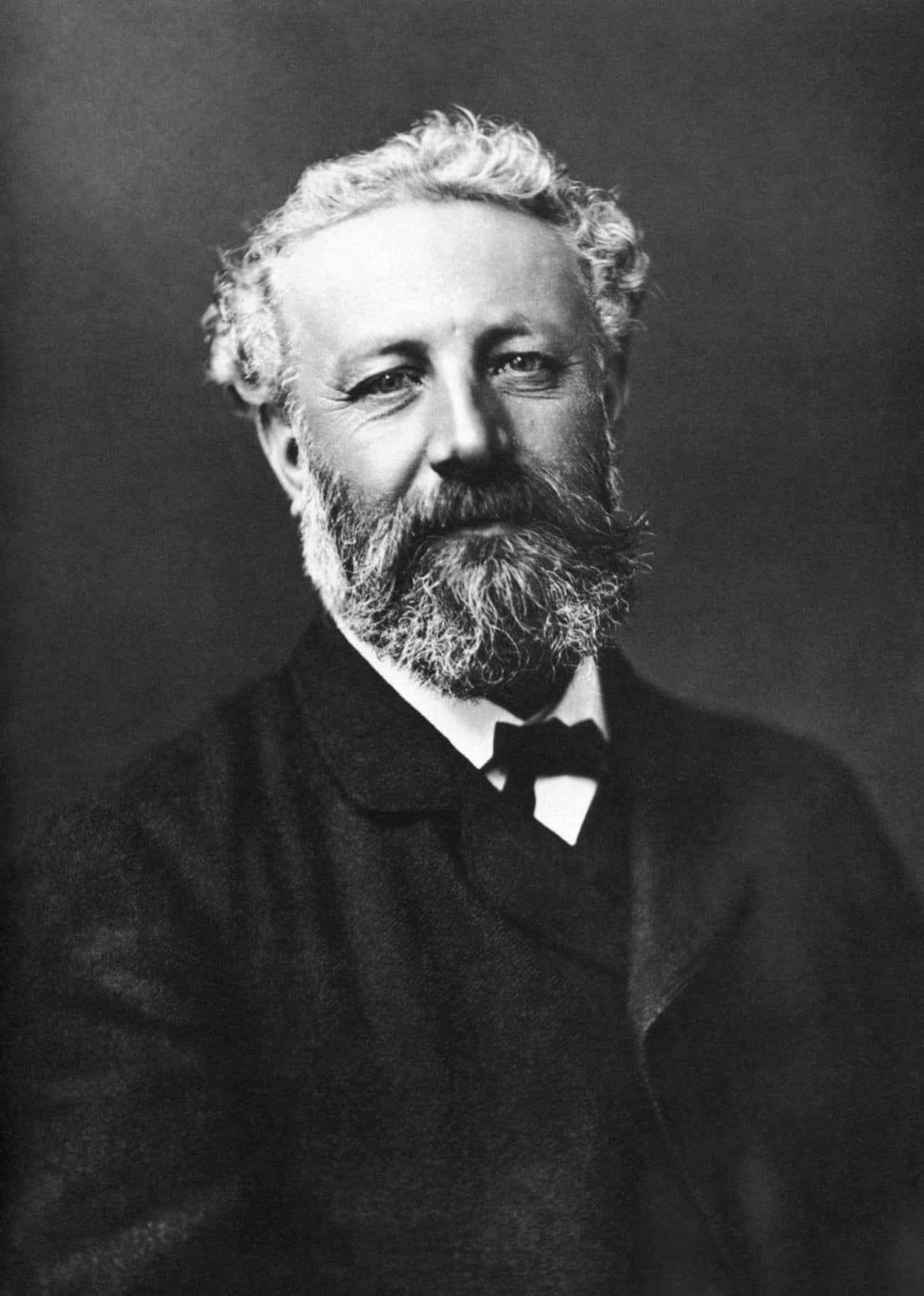
Jules Verne certainly had his fair share of future predictions. One of the most impressively accurate came courtesy of his short story, " From the Earth to the Moon ," in which he predicted that man would travel to the moon. He got many facts about the voyage right, including elements of the space shuttle, the month it would launch, from where it would launch, and the number of astronauts on board.
Philip K. Dick Imagined a World Full of Virtual Reality and Holograms
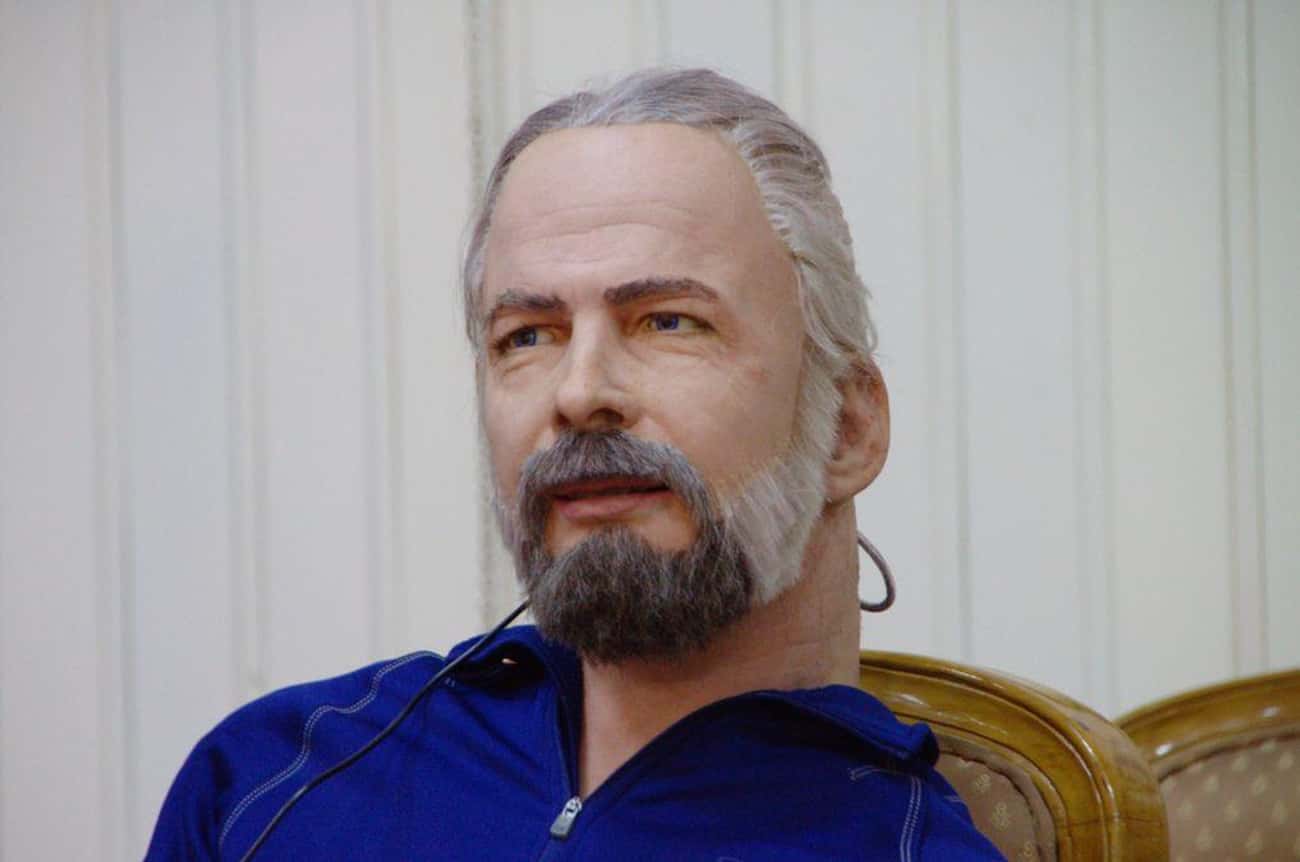
Several of Phillip K. Dicks most famous works, including Minority Report, were full of virtual and augmented reality . The author imagined worlds where everything around you could be something else, thanks to electronics that altered the perception of reality.
In 2016, several virtual reality systems are set to take over gaming and entertainment, likely proving Dick's predictions to be accurate.
Robert Heinlein Predicted the Cold War
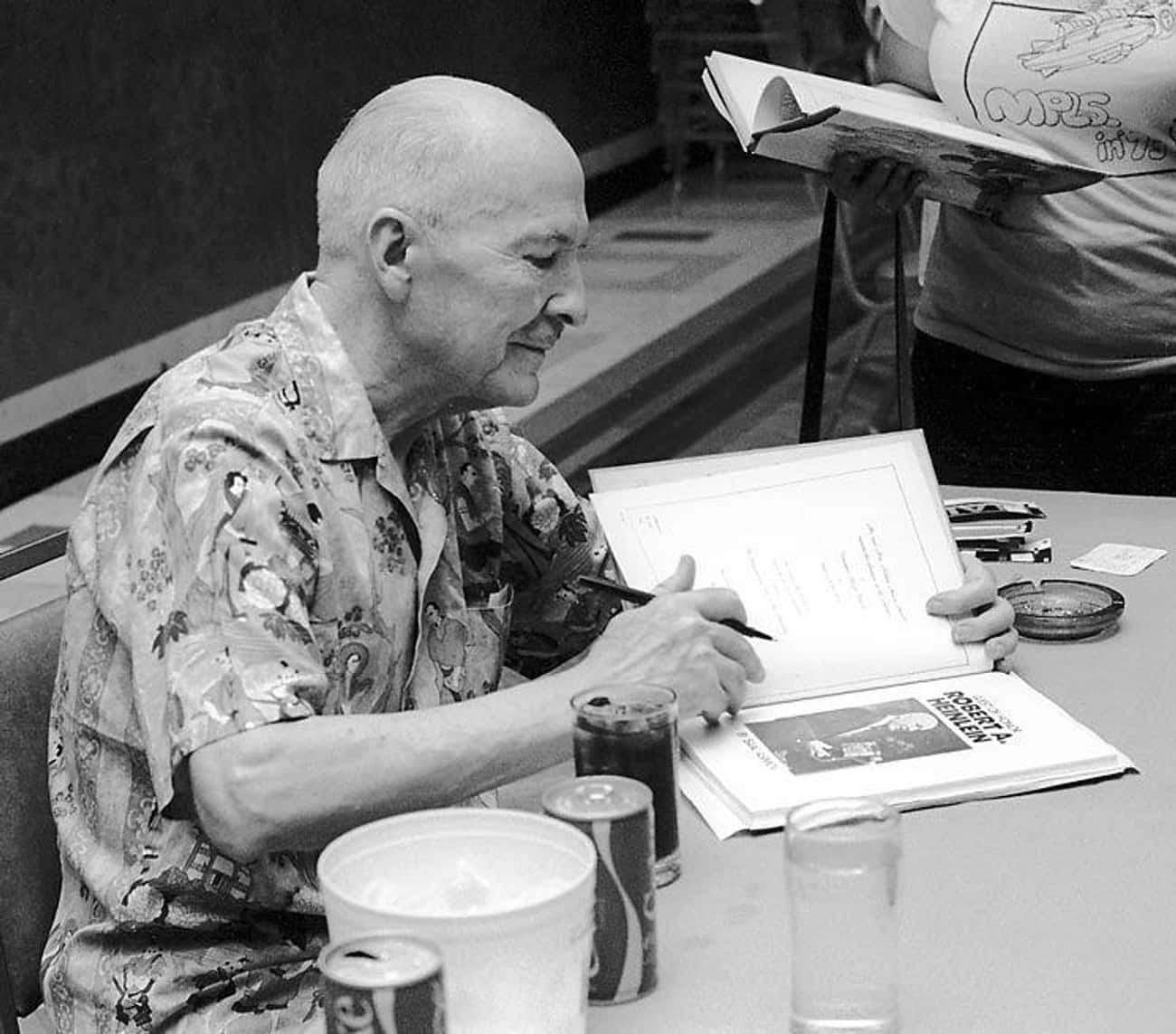
Five years before the United States dropped its nuclear bombs, Heinlein predicted their existence and how they would l ead to the Cold War . He imagined the United States would be the first country to develop nuclear weapons and that a heated and dangerous battle to catch up would ensue.
Edward Bellamy Came Up with Credit Cards

In his 1887 novel Looking Backward , Bellamy describes a concept that is relatively close to that of the modern day credit card. In his future utopian society, set in the year 2000, citizens use credit cards, in lieu of physical money, to make purchases .
The credit cards are based on money in a central bank controlled by the government. In the same book, Bellamy also describes what are essentially modern department stores.
Aldous Huxley Predicted Genetic Engineering
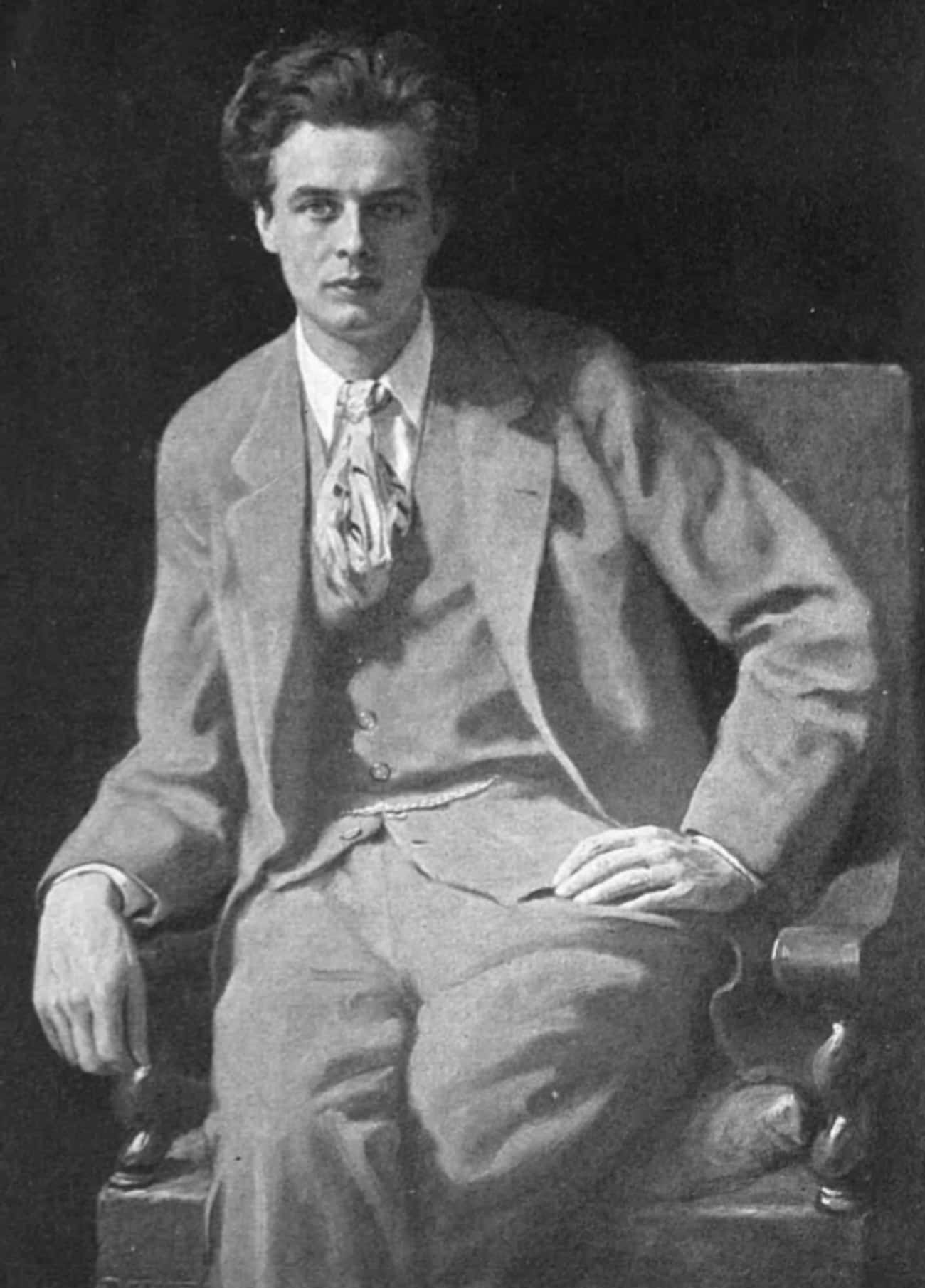
In Brave New World , Aldous Huxley imagines a future that is dominated by genetic engineering . In his future, people are genetically engineered to fit perfectly into various classes and societal structures. There is no room for imagination or freedom, as everything is essentially mapped out according to how you were engineered.
We haven't fallen into the pessimistic future that Huxley imagined quite yet, though the modern process of genetic engineering is quite similar to what he describes.
Douglas Adams Predicted eBooks
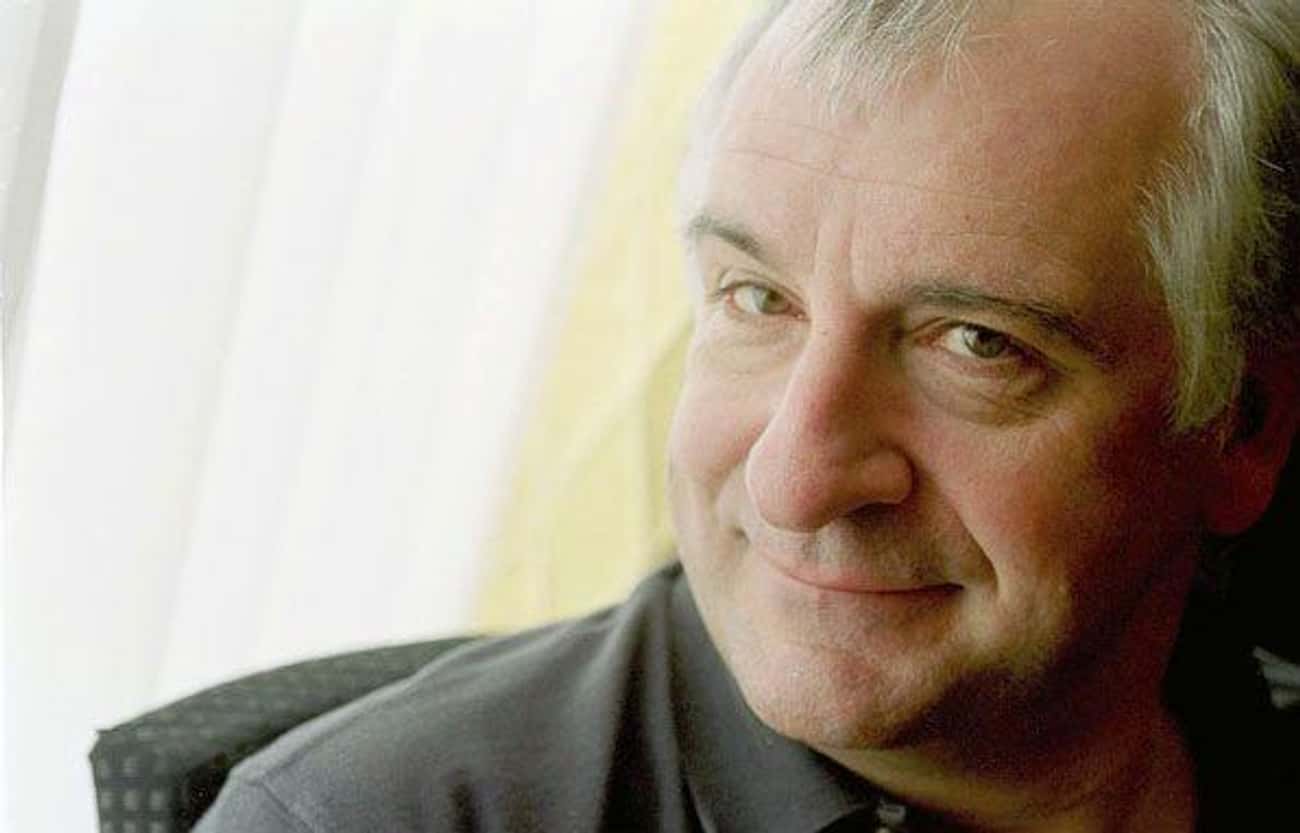
In The Hitchhiker's Guide to the Galaxy , Adams predicts a sort of table t/eBook/Siri hybrid. The Hitchhiker's Guide to the Galaxy is a book inside Hitchhiker's that talks and digitally displays information. It helps the protagonists navigate the mysterious galaxy, giving them helpful tips and information along the way.
It can be voice activated and in many ways acts like an iPad.
Hugo Gernsback Predicted FaceTime
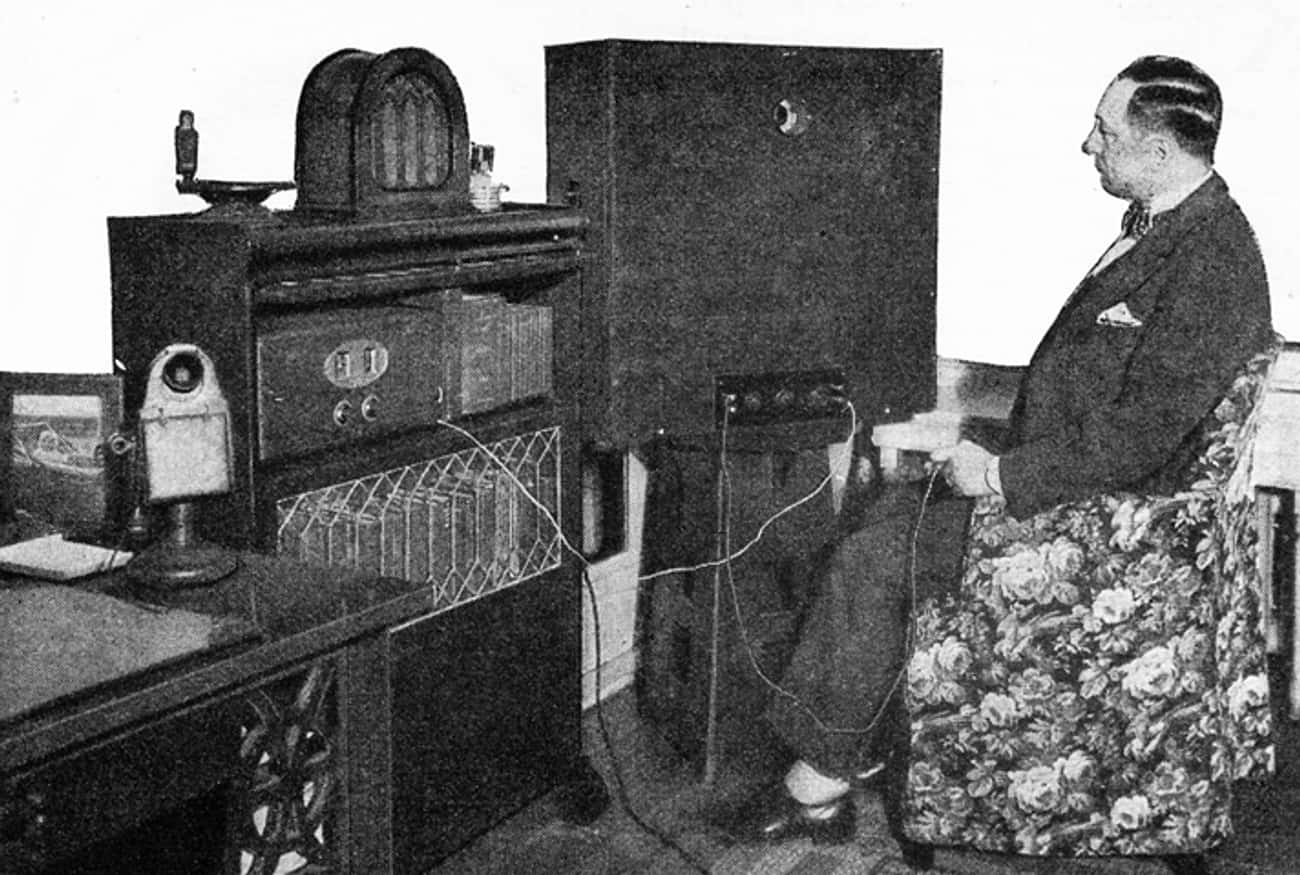
In Hugo Gernsback's Ralph 124C 41+ , the author predicted video calls with what he called the Telephot. It was a big video screen that allowed people to talk to each other just like modern video calls do. Gernsback's book was published in 1911, long before we had Skype.
Gernsback also made predictions about air conditioning, television, and the many uses of electricity.
Arthur C. Clarke Predicted Smartwatches and Satellites
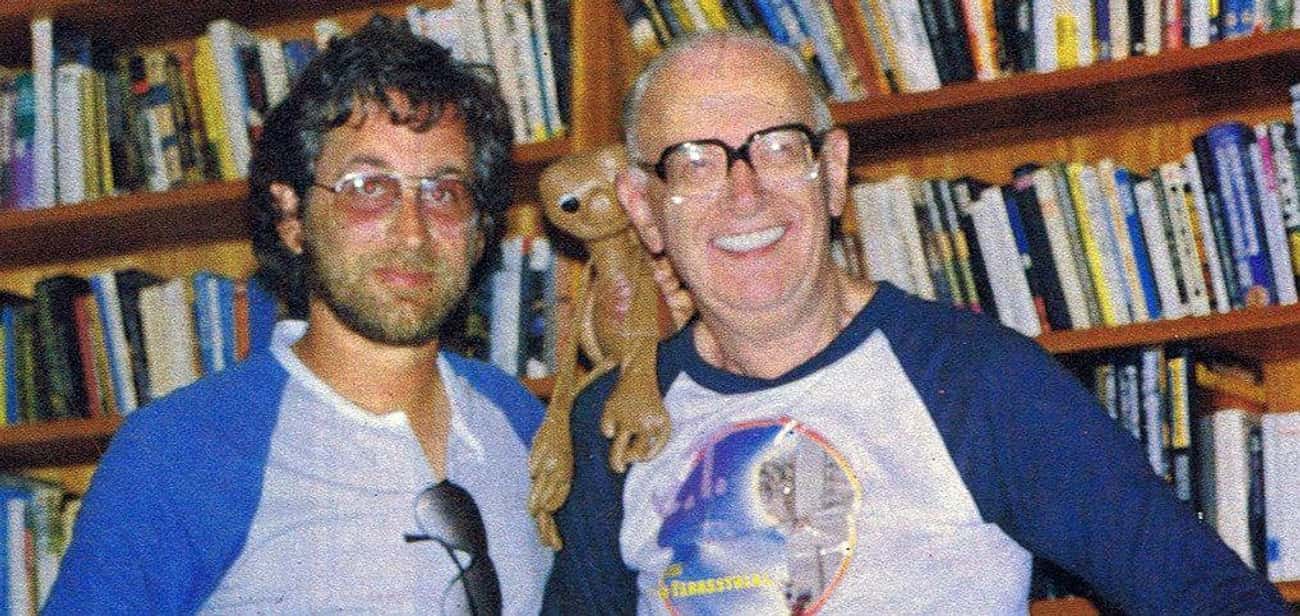
The science fiction author of 2001: A Space Odyssey first predicted satellite communication relays in a 1945 manuscript. Years later, after satellites had become a real thing, he predicted smartwatches, or " wristwatch telephones ," as he called them.
The writer also imagined the Internet, through which he believed people would be able to do things like book plane tickets and buy groceries.
Ray Bradbury Predicted Self-Driving Cars
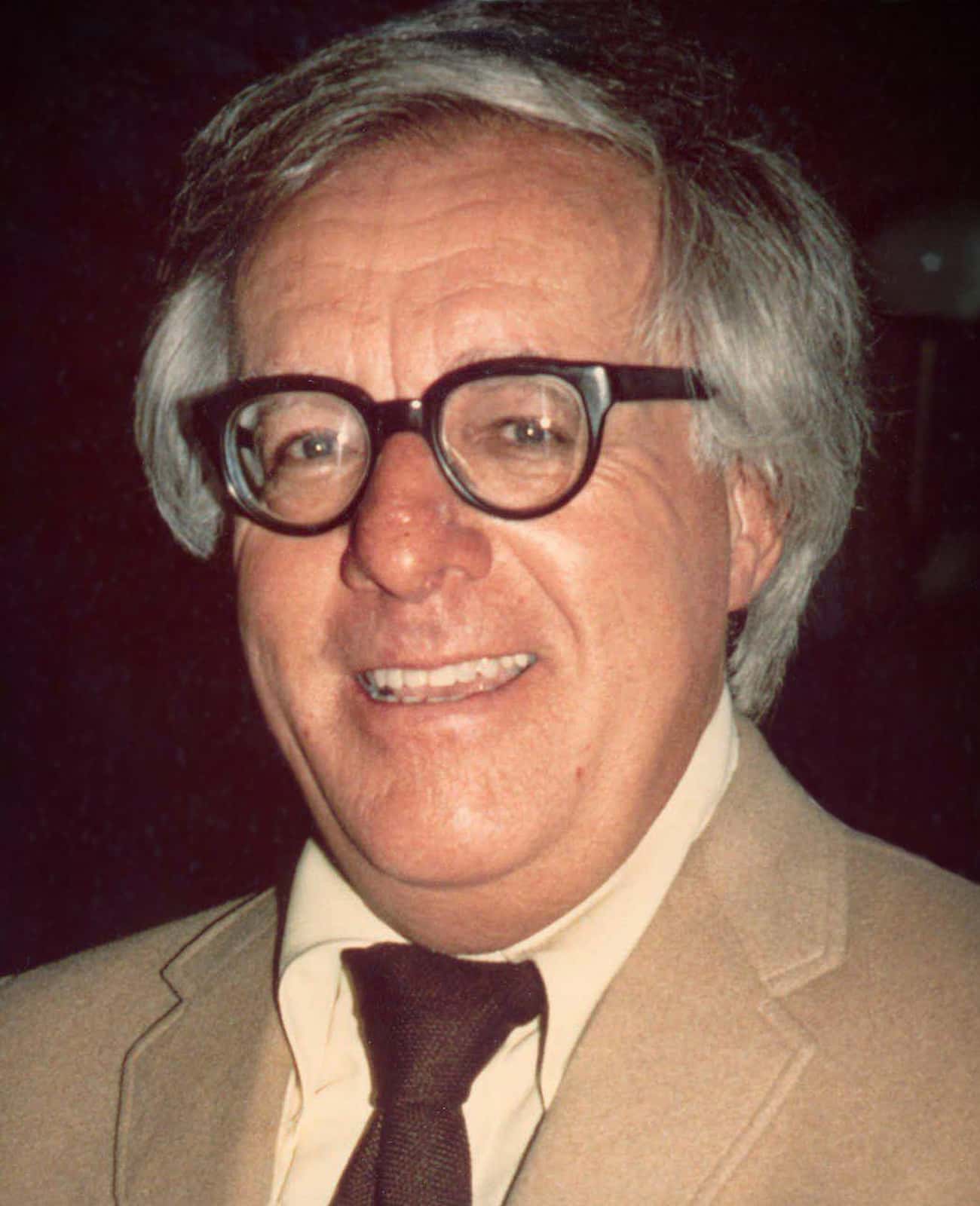
Self-driving cars may not be the norm, but they are certainly the future, and Ray Bradbury knew that way back in 1951. Bradbury wrote about cars that drove themselves in his novel, The Pedestrian . Although plenty of other science fiction writers piggybacked off the idea over the last 60+ years, Bradbury is the real pioneer of the idea. Hopefully Google will give him some credit when their autonomous cars take over the world.
H.G. Wells Predicted Cell Phones and Voicemail
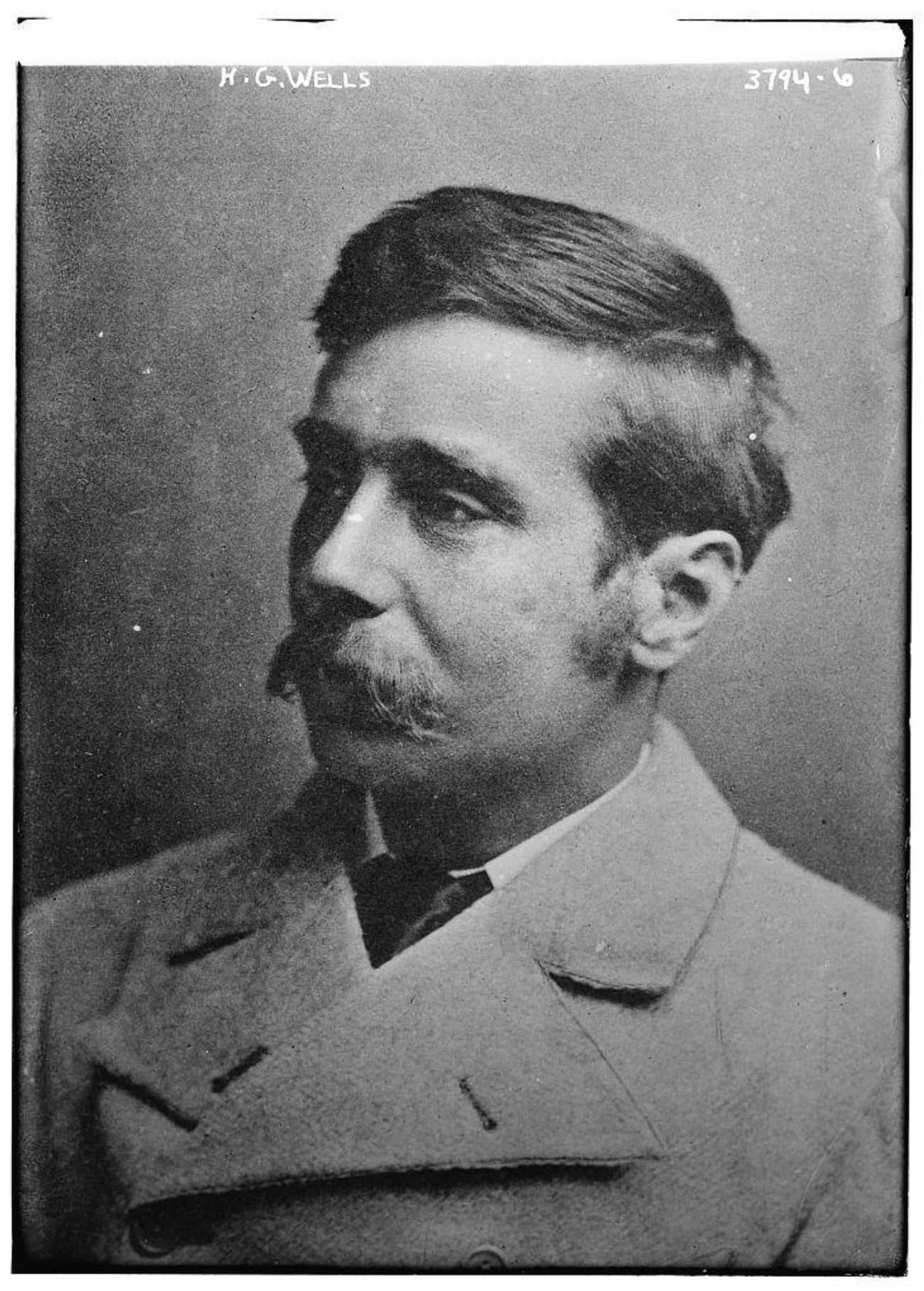
Sure, we don't have time machines to go visit the Eloi, but Wells's ideas of cell phones and voicemails certainly have. In both The Shape of Things to Come and Men Like Gods , Wells imagined what essentially amounted to cell phones and voicemails . The characters in his books used these gadgets as their primary sources for communication in much the same ways that we do today.
H.G. Wells Came Up with the Atomic Bomb
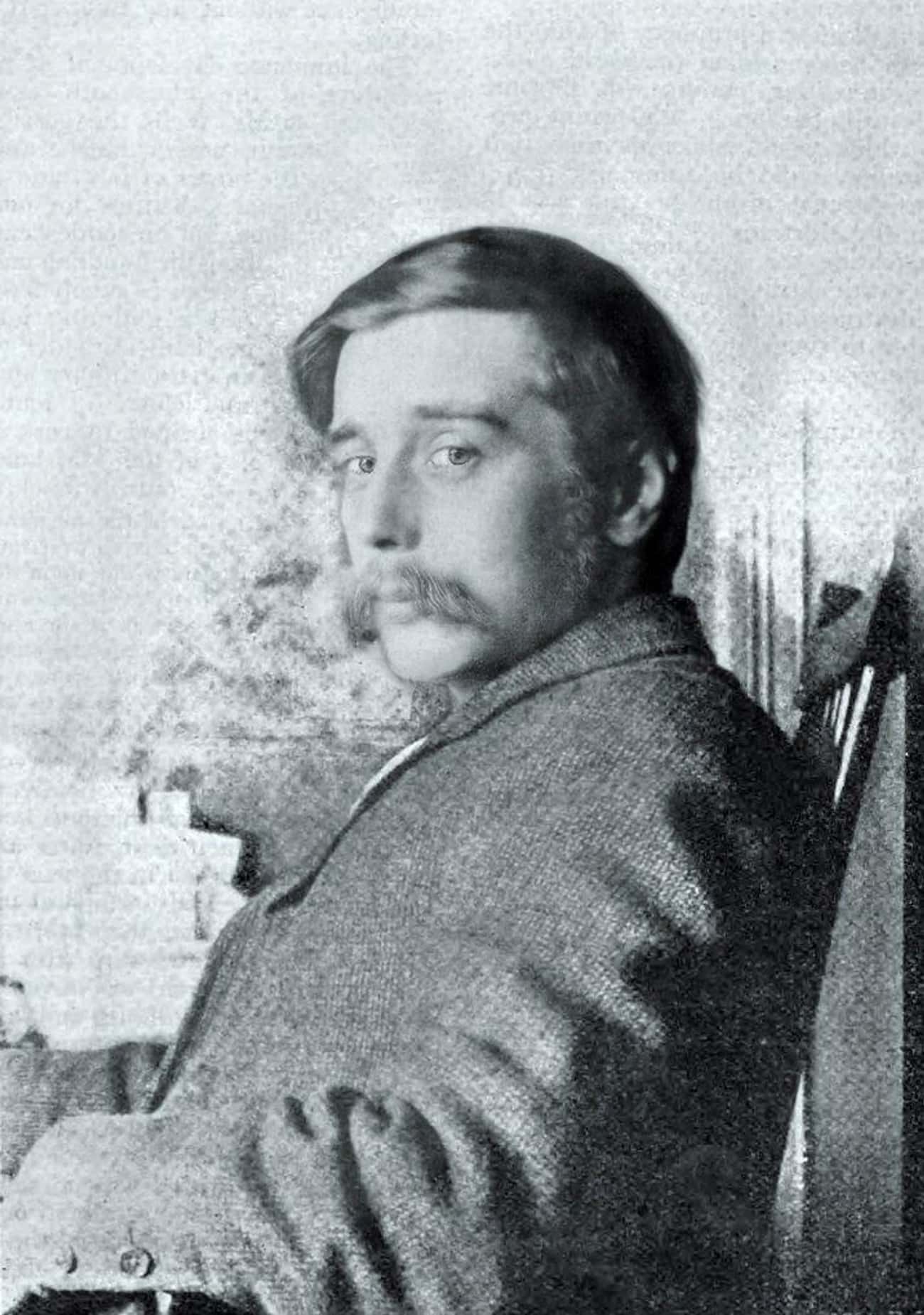
He may not have predicted the mushroom cloud, but H.G. Wells did predict the atomic bomb long before it was actually a thing . In 1914, he wrote that an explosion from radioactive decay would be massive and that the nuclear fallout from it would be devastating. As we know now, he was right on both accounts.
Mark Twain Wrote About the Internet Almost a Century Before It Existed
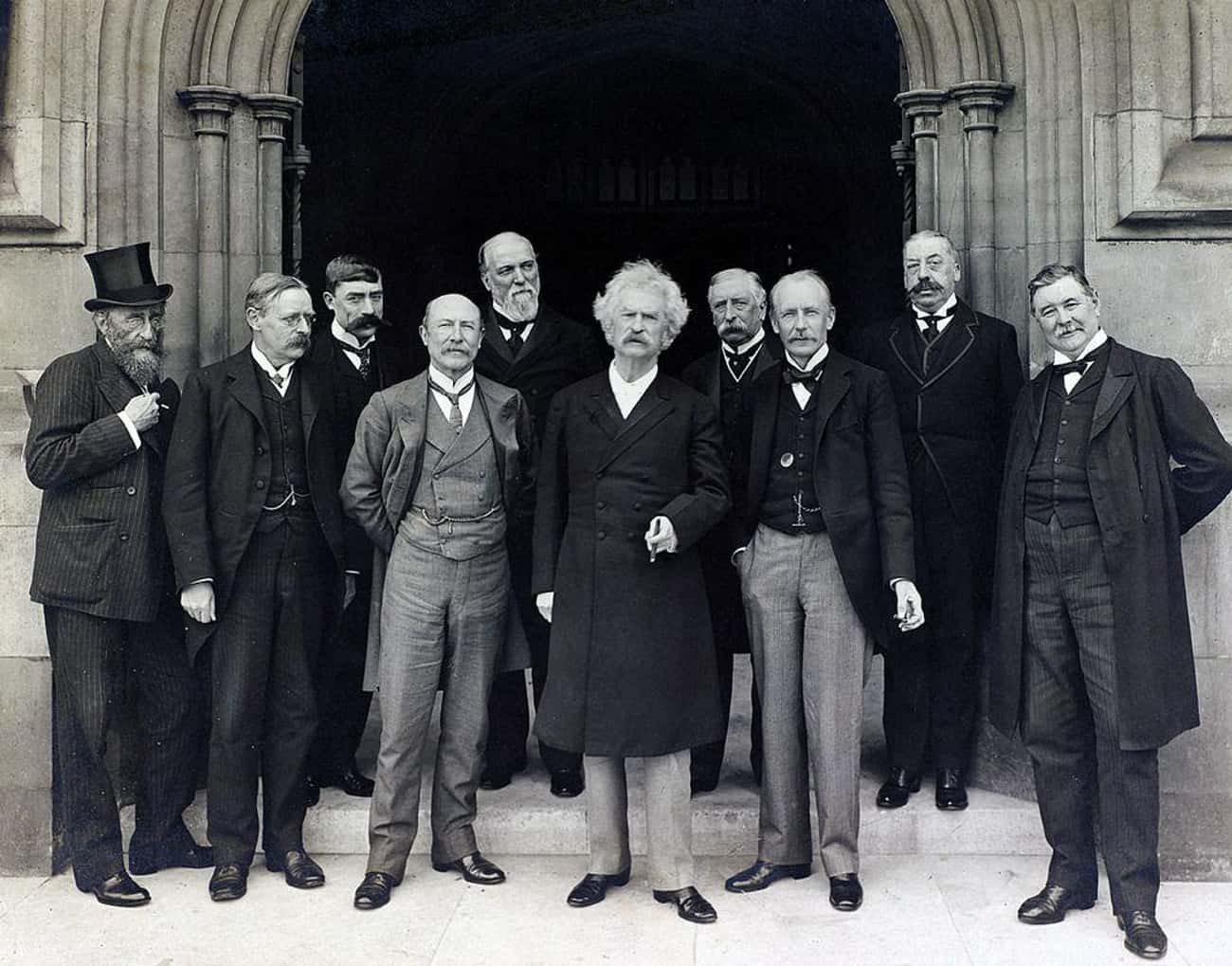
In 1898, Mark Twain essentially envisioned what would become the Internet. He wrote about something he called a telectroscope - essentially a dial-up connection - which allowed people to connect to a worldwide network via their phone lines, letting them see and hear information from all over the globe.
Ray Bradbury Came Up with the Idea of Earbuds
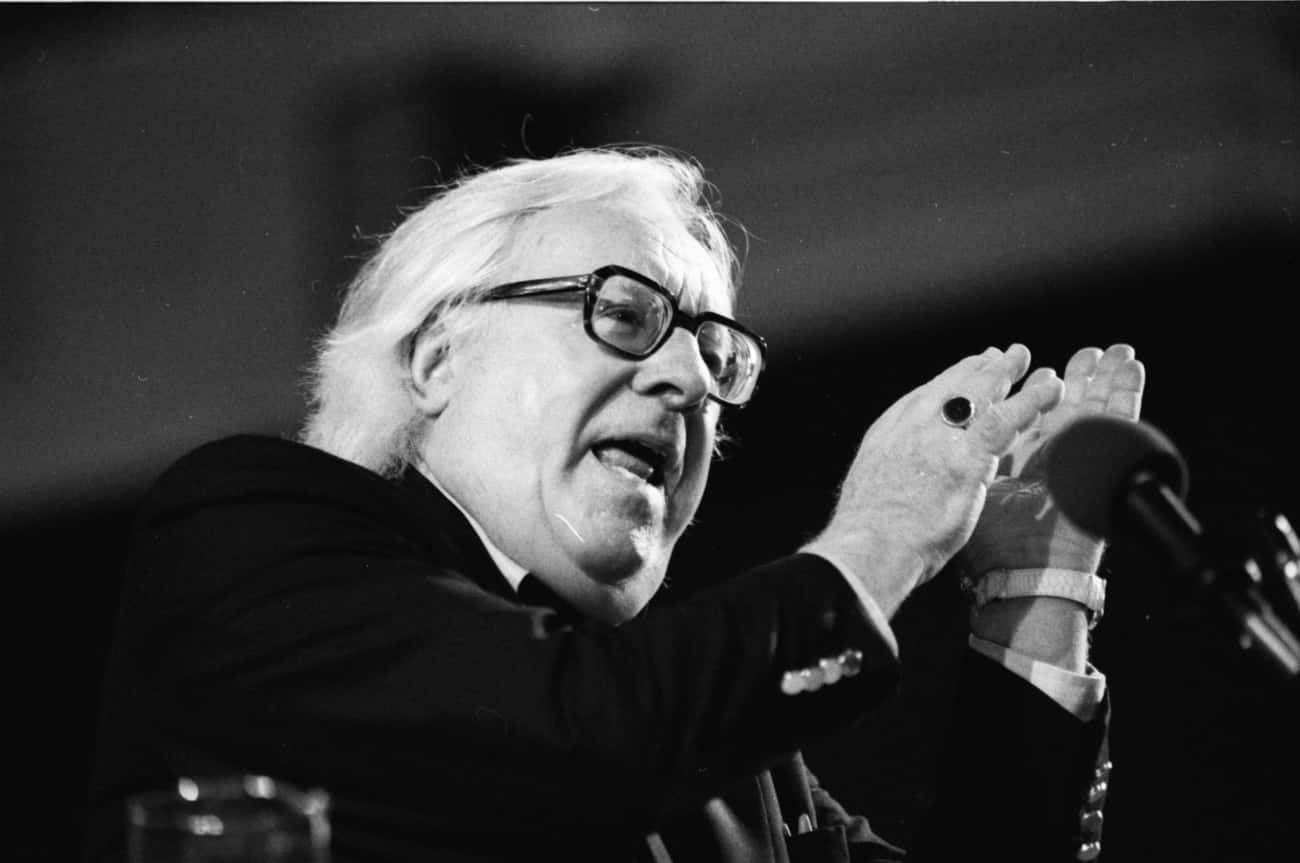
Earbuds weren't around in 1953 when Ray Bradbury predicted them in Fahrenheit 451 . He imagined them pretty much like they are today: little devices that fit right into your ear and play all sorts of sounds.
Out of all the futuristic predictions on this list Bradybury's ear buds may be the one that we use most in our every day lives.
Mary Shelley Predicted Transplants
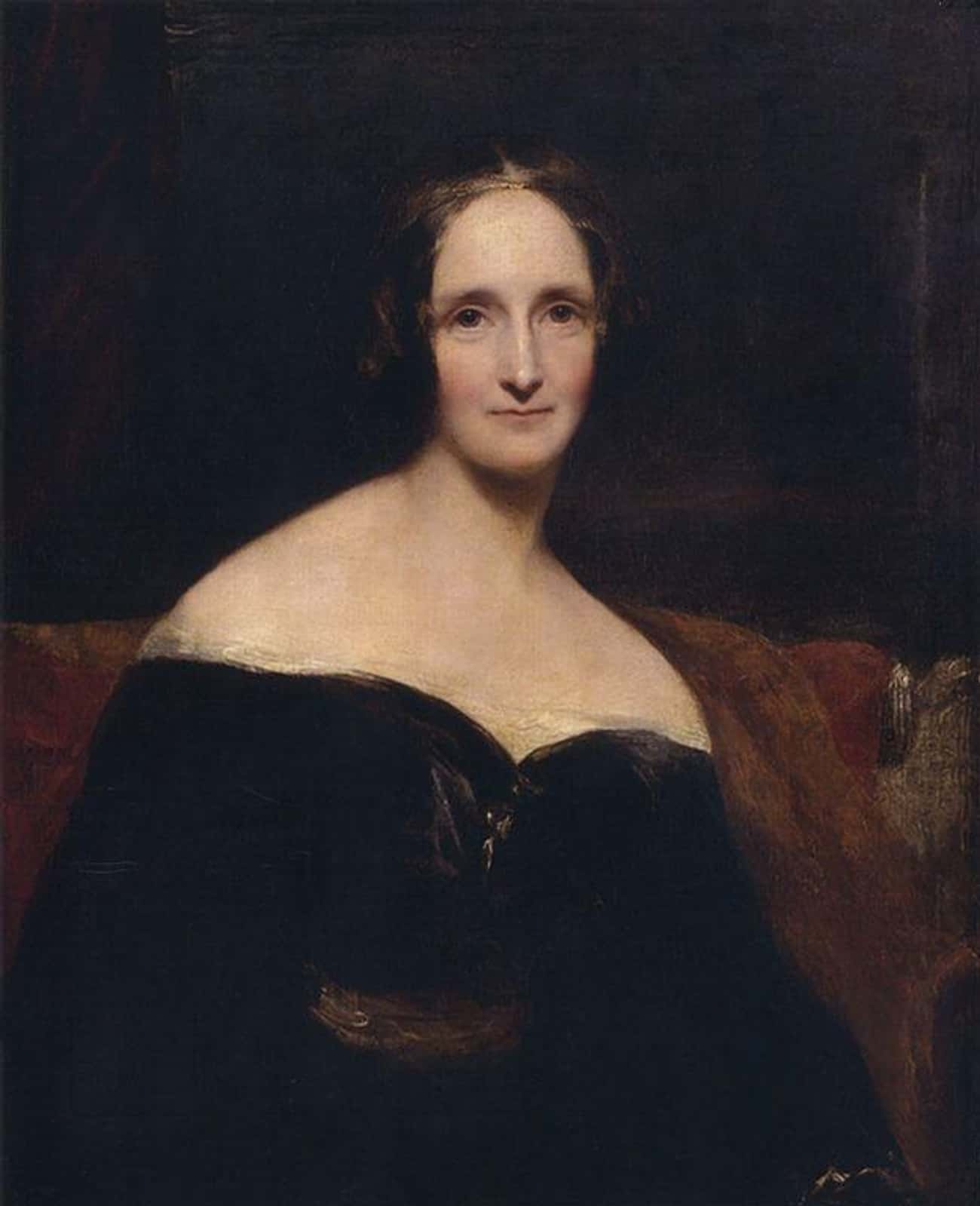
Published in 1818 Mary Shelley's The Modern Prometheus imagined a world where science could cure death with the help of organ transplants. In her book Doctor Frankenstein reanimates dead tissue with electricity after sewing it together, and while that may far out even for modern medical practices her foresight did imagine organ transplants more than a 100 years before they ever happened.
What did we think the future would look like? How has it really turned out? What's next for humanity and the universe? What have we done? Lists to keep you up at night, quaking in your moon boots.
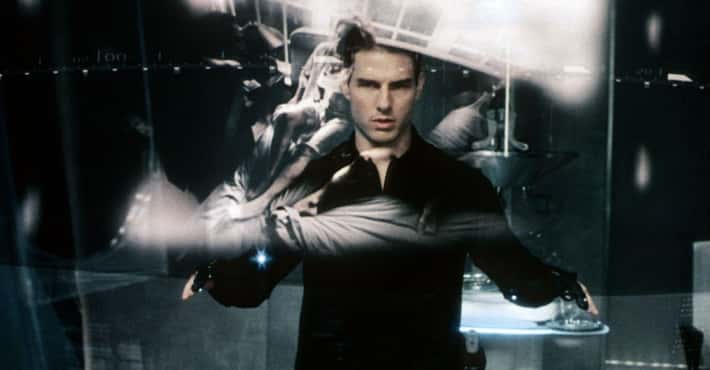
7 science fiction inventions that became reality
Sci-fi authors wanted to prevent dystopian futures. Instead they predicted them.
By Tom McNamara | Published Oct 15, 2019 8:45 PM EDT

The future might already be written. Cheer, shudder, or eye-roll in disgust, but history shows that what awaits us is often spelled out in the pages of science fiction. The genre’s predictive track record stretches millennia: Authors mused about the lunar landing as far back as 175 A.D., when Syrian satirist Lucian of Samosata imagined flying ships to the moon, a tale that tapped the seafaring culture’s desire to ascend to the heavens. Fiction isn’t always pure fantasy. “Some of our greatest authors are not making up stuff whole cloth, but sampling from the zeitgeist—scientific or otherwise,” says Dan Rockmore, director of Dartmouth College’s Neukom Institute for Computational Science, which hands out annual prizes for visionary speculative writing. Of course, scribes do have blind spots. They never quite nailed the smartphone (easy, Trekkies—those communicators are more like fancy pagers). Here’s a glimpse of what sci-fi writers of yore got right.
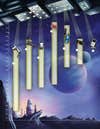
1. Defibrillator
Inspired by galvanism (manipulating muscles with electrical current), Mary Shelley’s Dr. Victor Frankenstein famously reanimates dead flesh. In 1947, the less-ghoulish Dr. Claude Beck saved a teenage patient with a 60 Hz jolt to the heart from his homemade defibrillator: two silver paddles wired to an outlet. By the ’50s, the machines were reviving patients in hospitals worldwide.
2. Space stations
In Edward Everett Hale’s 1869 novella, The Brick Moon , four old college bros use a river-powered flywheel to sling a skyscraper-size brick sphere stuffed with people into orbit. The Soviet Union’s Salyut program launched a 65-foot cylinder—the seminal space station—in 1971. The crew snapped photos of Earth and experimented with gamma rays and a secret military radiometer.
3. Machine learning
Characters in Samuel Butler’s 1872 novel Erewhon realize computers “were ultimately destined to supplant the race of man,” so they ban smart gizmos. Real robots have been learning to outdo us since the ’50s, when AI researchers held a workshop at Dartmouth; IBM’s Arthur Samuel coded a checkers player that refined its approach until it could beat him.

4. Lab-grown meat
In her 1880 short story “Mizora,” Mary Bradley Lane describes Amazonians who transform beef’s chemical elements into synthetic burgers, “a more economical way of obtaining meat than by fattening animals.” She wasn’t far off: Dutch scientist Mark Post’s petri-born patty starts as bovine stem cells. In 2013, the first one cost more than $280,000 to grow, but he’s since trimmed that to around $12.
5. Long-term heat storage
After decades of small-scale projects in Nordic nations, Rokeya Sakhawat Hossain’s dream of saving summer sun to warm a town through winter (from her 1905 story “Sultana’s Dream”) got real in 2007. In Alberta, Canada, high midyear temps transfer to antifreeze in underground pipes. The warmed ground radiates heat into 52 homes for the whole cold season.
Tom Swift and His Electric Rifle details a boy inventor whose blaster stuns targets with “a powerful current of stored electricity.” That idea sounded neat to NASA engineer Jack Cover, whose TASER is an acronymic reference to that 1911 novel. The weapon he patented in 1974 conducts a jolt of juice from a battery, through a pair of leads, into the target’s nervous system.
7. Portable audio
Ray Bradbury famously wanted to prevent dystopian futures, not predict them. But one tiny piece of tech in 1953’s Fahrenheit 451 was about to hit a nonfiction tipping point: “thimble radios,” which provided “an electronic ocean of sound, of music and talk.” The next year, Texas Instruments debuted the first mass-market portable radio, complete with a single, wee earphone.
This story originally published in the Out There issue of Popular Science.
Like science, tech, and DIY projects?
Sign up to receive Popular Science's emails and get the highlights.
ARTS & CULTURE
The many futuristic predictions of h.g. wells that came true.
Born 150 years ago, H.G. Wells predicted, and inspired, inventions from the laser to email
Brian Handwerk
Science Correspondent
/https://tf-cmsv2-smithsonianmag-media.s3.amazonaws.com/filer/11/01/110107ad-a7ab-4a29-9f84-21112fbe7785/mcdthto_ec023_h.jpg)
Science fiction pioneer H.G. Wells conjured some futuristic visions that haven't (yet) come true: a machine that travels back in time, a man who turns invisible, and a Martian invasion that destroys southern England.
But for a man born 150 years ago, many of Wells's other predictions about the modern world have proven amazingly prescient.
Wells, born in 1866, was trained as a scientist, a rarity among his literary contemporaries, and was perhaps the most important figure in the genre that would become science fiction.
Writers in this tradition have a history not just of imagining the future as is might be, but of inspiring others to make it a reality. In 2012, Smithsonian.com published a top ten list of inventions inspired by sci-fi, ranging from Robert H. Goddard's liquid-fuelled rocket to the cell phone .
“Wells's was an imagination in a hurry, he wanted to get to the future sooner than it was going to happen. That's why he's so predictive in his writing,” explains Simon James , head of the English Studies department at Durham University and the editor of the official journal of the H.G. Wells society .
Wells’s ideas have also endured because he was a standout storyteller, James adds. No less a writer than Joseph Conrad agreed. “I am always powerfully impressed by your work. Impressed is the word, O Realist of the Fantastic!” he wrote Wells after reading The Invisible Man .
Here are some of the incredible H.G. Wells predictions that have come true, as well as some that haven't—at least not yet.
Phones, Email, and Television
In Men Like Gods (1923), Wells invites readers to a futuristic utopia that's essentially Earth after thousands of years of progress. In this alternate reality, people communicate exclusively with wireless systems that employ a kind of co-mingling of voicemail and email-like properties.
“For in Utopia, except by previous arrangement, people do not talk together on the telephone,” he writes. “A message is sent to the station of the district in which the recipient is known to be, and there it waits until he chooses to tap his accumulated messages. And any that one wishes to repeat can be repeated. Then he talks back to the senders and dispatches any other messages he wishes. The transmission is wireless.”
Wells also imagined forms of future entertainment. In When the Sleeper Wakes (1899), the protagonist rouses from two centuries of slumber to a dystopian London in which citizens use wondrous forms of technology like the audio book, airplane and television—yet suffer systematic oppression and social injustice.
Genetic Engineering
Visitors to The Island of Dr. Moreau (1896) were confronted with a menagerie of bizarre creatures including Leopard-Man and Fox-Bear Witch, created by the titular madman doctor in human-animal hybrid experiments that may presage the age of genetic engineering.
Though Moreau created his Frankenbeasts through more crude techniques, like surgical transplants and blood transfusions, the theme of humans playing God by tinkering with nature has become a reality. Scientists are working towards the day when a nimal organs could serve as long-term transplants for human patients , though today human immune systems still ultimately reject such efforts. And controversial experiments known as chimera studies create human-animal hybrids by adding human stem cells to animal embryos.
Notably, the human-animal hybrids Moreau creates eventually do the doctor in, and that ending echoes another common Wells theme. “It's often a warning about the consequences of technology, in particular when you don't think them through properly,” explains James.
Lasers and Directed Energy Weapons
Martians in The War of the Worlds (1898) unleash what Wells called a Heat-Ray, a super weapon capable of incinerating helpless humans with a noiseless flash of light. It would be more than six decades before Theodore Maiman fired up the first operational laser at California's Hughes Research Laboratory on May 16, 1960, but military thinkers had been hoping to weaponize the conceptual laser even before it was even proven practical .
Wells's description isn't accurate enough to build a working laser, but it resembles both that device and other “directed energy” weapons, such as those using microwaves, electromagnetic radiation, and radio or sound waves, which the United States and other militaries have developed in recent years .
“Many think that in some way [the Martians] are able to generate an intense heat in a chamber of practically absolute non-conductivity. This intense heat they project in a parallel beam against any object they choose, by means of a polished parabolic mirror of unknown composition, much as the parabolic mirror of a lighthouse projects a beam of light,” Wells wrote.
Typically, Wells was more interested in what the effects of his future ideas might be, rather than working out the technical details, James stresses.
“He'll kind of take one element of scientific understanding of the world and tweak it. So in The Time Machine , if you think of time as the fourth dimension, what if you could travel in time as freely as in the other three? Or, in The First Men in the Moon , what if you could make a material [Wells called it Cavorite] as impervious to gravity as other materials are impervious to heat? You just take that one thing, and see what follows from it,” James explains.
(Today's leading science fiction authors still use this technique while at work shaping the future of tomorrow . In fact, some companies commission “design fiction” to see how innovative ideas might work if they become fact in the future. “There is nothing weird about a company doing this—commissioning a story about people using a technology to decide if the technology is worth following through on,” says novelist Cory Doctorow, whose clients have included Disney and Tesco. “It’s like an architect creating a virtual fly-through of a building.” )
Atomic Bombs & Nuclear Proliferation
Wells reveled in the potential benefits of technology but also feared their dark side. “H.G. Wells was probably the writer who saw most clearly in the early 20th century the possibility of total war,” says Eleanor Courtemanche of the University of Illinois at Urbana-Champaign (A new physical and online exhibition there shows off an extensive Wells collection .)
Wells recognized the world-changing destructive power that might be harnessed by splitting the atom. The atomic bombs he introduces in The World Set Free (1913) fuel a war so devastating that its survivors are moved to create a unified world government to avoid future conflicts.
Wells's bombs differed from those actually developed by scientists with the Manhattan Project. They exploded continually, for days, weeks or months depending upon their size, as the elements in them furiously radiated energy during their degeneration and in the process created mini-volcanoes of death and destruction.
Wells also clearly saw the dangers of nuclear proliferation, and the doomsday scenarios that might arise both when nations were capable of “mutually assured destruction” and when non-state actors or terrorists got into the fray.
“Destruction was becoming so facile that any little body of malcontents could use it; it was revolutionizing the problems of police and internal rule. Before the last war began it was a matter of common knowledge that a man could carry about in a handbag an amount of latent energy sufficient to wreck half a city,” he wrote.
Where Wells Was Wrong—At Least So Far
Wells rejected the idea that the future is unknowable, writes esteemed science fiction writer James Gunn , who also helped to pioneer university study of science fiction.
“He believed that it was possible, through the use of what he first called "inductive history" and later "Human Ecology" (defined as the working out of "biological, intellectual, and economic consequences"), to chart the possibilities of the future and to push people into making sensible use of those possibilities. He was the first futurologist, the man who invented tomorrow,” wrote Gunn in The Science of Science-Fiction Writing , published in 2000.
But Wells did have other big ideas that haven't come to fruition, though of course there's always the chance that his vision extended farther into the future than our own time. As of this writing we've not been invaded by Martians. Human invisibility also remains elusive—though science is making progress in that direction . The time machine, an invention introduced in a 1895 novella, hasn't been worked out either.
Perhaps the biggest disappointment to Wells was the failure of his idealized political vision, a world government, which he described in A Modern Utopia (1905)
Wells was a committed socialist who hoped that a global “New Republic” would assure peace in perpetuity. Wells, who died in 1946, lived long enough to learn that this imagined future wasn't likely to ever come true, so he took a very active role in fostering international cooperation wherever he could.
“After World War II broke out, it was another slap in the face to the idea of a world state ever coming off,” James says, “so Wells started a campaign for universal human rights. I believe it was Wells writing letters to The Times that started the process that eventually led to the United Nations declaration of world rights in 1947.” Wells also laid out his vision in The Rights of Man (1940), and his draft declarations on the topic were used to help write the formal UN document.
Courtemanche adds that Wells's idea of world government, while never reaching his Utopian ideal, actually did come to fruition in at least some small ways.
“Think of all the international agencies that sprang up after WWII in hopes that some kind of international framework would keep world war from happening again,” she notes. “Bretton Woods, the IMF, NATO, the European Union -- none of these were truly global, but they were definitely steps toward the more peaceful and organized world society that Wells envisioned.”
Get the latest Travel & Culture stories in your inbox.
Brian Handwerk | READ MORE
Brian Handwerk is a science correspondent based in Amherst, New Hampshire.

Savvy sci-fi futurists: 21 science fiction writers who predicted inventions way ahead of their time
Many futurists, scientists and inventors have been inspired by the imagination and anticipation of the future inherent to science fiction novels. From the Internet to iPads to smart machines, some of the world’s greatest advances in technology were once fictional speculation. As sci-fi author Arthur C. Clarke wrote in Profiles of the Future (1962), “The only way of discovering the limits of the possible is to venture a little way past them into the impossible.”
Sci-fi is a powerful genre because it envisages how society could function differently. “This is the first step towards progress as it allows us to imagine the future we want, and consider ways to work towards it,” writes physicist and philosopher Dr. Helen Klus . “It also makes us aware of futures we wish to avoid, and helps us prevent them.”
The 21 sci-fi futurists featured below gave some of the earliest recorded mentions of inventions that have since become a reality. Several of these authors doubted that their fictional inventions would ever come to fruition, or thought it would take much longer for their inventions to occur than it actually took. Others were remarkably spot on. Regardless of accuracy, however, what these future thinking authors all recognized was that change is an inevitable and powerful force that can blur the boundaries between fiction and possibility.
1. Rocket-powered space flight: Cyrano de Bergerac, 1657
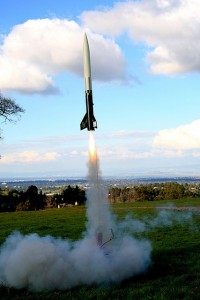
“I ran to the Soldier that was giving Fire to it… and in great rage threw my self into my Machine, that I might undo the Fire-Works that they had stuck about it; but I came too late, for hardly were both my Feet within, than whip, away went I up in a Cloud.”
In a literary sense, this passage evokes the exhaust flames produced by rockets with internal combustion engines. The first rocket that propelled something into space—the satellite Sputnik—would be launched 300 years later, in 1957.
2. Submarines: Margaret Cavendish, 1666
Many people attribute the first mention of a submarine to Jules Verne, who described an electric submarine in his famous book 20,000 Leagues Under the Sea (1870). However, few people know that an early form of submarine was mentioned in The Description of a New World, Called The Blazing-World (1666), a book about a satirical utopian kingdom, written by Margaret Cavendish, the Duchess of Newcastle. The book is perhaps the only known work of utopian fiction by a woman in the 17th century, as well as one of the earliest examples of what we now call science fiction. Cavendish’s protagonist talks to sentient animals about various scientific theories, including atomic theory, before travelling home in a submarine when she hears that her homeland is under threat.
3. Machine-automated language: Jonathan Swift, 1726
Jonathan Swift, the well-known Irish satirist who wrote Gulliver’s Travels , critiqued the so-called scientific literature of his time, which was not always the result of rational thinking. Consequently, when Swift described an “engine” that could form sentences, he was satirizing the arbitrary methods of some of his scientific contemporaries:
“…the most ignorant person, at a reasonable charge, and with a little bodily labour, might write books in philosophy, poetry, politics, laws, mathematics, and theology, without the least assistance from genius or study”.
What Swift may not have realized was that his ensuing description of a machine containing all the words of the language spoken in Lagado, a fictional city, is one of the earliest known references to a device broadly representing a computer. Nowadays, computers are able to generate permutations of word sets, as Swift envisaged.
4. Eugenics: Nicolas-Edme Rétif, 1781

Among the creatures Rétif’s hero encounters is an articulate half-human, half-baboon. “The book is part natural history, part imaginary evolutionary experiment, in which Rétif brings these primitive beings to life and demonstrates the genetic mixing that gradually results in both the differentiation of animal species and the emergence of humankind,” writes Amy S. Wyngaard . Rétif imagined Australasia as a sort of eugenic utopia, a century before the term “eugenics” would be coined by Charles Darwin’s half-cousin, Francis Galton .
5. Oxygen in air travel and space travel: Jane Webb Loudon, 1828
A future where women wear trousers and automatons function as surgeons and lawyers was foreseen by pioneering sci-fi writer Jane Webb Loudon . In her book The Mummy: A Tale of the Twenty-Second Century , Loudon gave a very early mention of the notion that, to survive in outer space in earth’s orbit, it would be necessary to take some air with you. She wrote:
“… and the hampers are filled with elastic plugs for our ears and noses, and tubes and barrels of common air, for us to breathe when we get beyond the atmosphere of the earth.”
So, next time you are on an airplane watching a demo about oxygen masks, don’t forget to remember the contribution of Jane Webb Loudon!
6. Debit cards: Edward Bellamy, 1888
Edward Bellamy’s novel Looking Backward: 2000 to 1887 featured an American utopian society that used so-called “credit cards”. Bellamy’s concept actually relates more to debit cards and spending social security dividends than borrowing from a bank. The main character describes how people are given a stated amount of credit on their card to purchase goods from the public storehouses:
“You observe,” he pursued as I was curiously examining the piece of pasteboard he gave me, “that this card is issued for a certain number of dollars. We have kept the old word, but not the substance…The value of what I procure on this card is checked off by the clerk, who pricks out of these tiers of squares the price of what I order.”
Debit cards and credit cards would be invented more than 60 years later.
7. Electric fences: Mark Twain, 1889
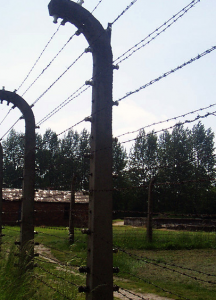
“Now, then, observe the economy of it. A cavalry charge hurls itself against the fence; you are using no power, you are spending no money, for there is only one ground-connection till those horses come against the wire; the moment they touch it they form a connection with the negative brush through the ground, and drop dead.”
Electric fences were not used to control livestock in the United States until the early 1930s.
8. Videoconferencing: Jules Verne, 1889
Famous French sci-fi pioneer Jules Verne described the “phonotelephote”, a forerunner to videoconferencing, in his work In the Year 2889 . The phonotelephote allowed “the transmission of images by means of sensitive mirrors connected by wires,” Verne wrote. This was one of the earliest references to a videophone in fiction, according to Technovelgy.com , a site that traces inventions and ideas from science fiction. In the Year 2889 also predicts newscasts, recorded news, and skywriting—inventions which have all come to fruition well before 2889.
9. X-ray and CAT scan technology: John Elfreth Watkins Jr., 1900
In a visionary article for the Ladies’ Home Journal entitled “What May Happen in the Next Hundred Years” , an American named John Elfreth Watkins Jr. made several remarkable predictions. One of the most striking was his prediction of X-ray and CAT scan technology:
“Physicians will be able to see and diagnose internal organs of a moving, living body by rays of invisible light.”
In the same article, Watkins also foresaw high-speed trains, satellite television, the electronic transmission of photographs, and the application of electricity in greenhouses.
10. Radar: Hugo Gernsback, 1911
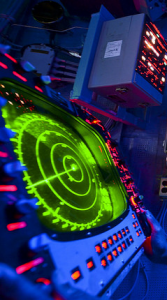
“A pulsating polarized ether wave, if directed on a metal object can be reflected in the same manner as a light ray is reflected from a bright surface… By manipulating the entire apparatus like a searchlight, waves would be sent over a large area. Sooner or later these waves would strike a space flyer. A small part of these waves would strike the metal body of the flyer, and these rays would be reflected back to the sending apparatus. Here they would fall on the Actinoscope, which records only the reflected waves, not direct ones…From the intensity and elapsed time of the reflected impulses, the distance between the earth and the flyer can then be accurately estimated.”
In 1933, a working radar device that could detect remote objects by signals was created.
11. Atomic bomb: H.G. Wells, 1914
One of the most unfortunate legacies of science fiction is the genre’s inspiration for the atomic bomb. In The World Set Free , H.G. Wells predicted that a new type of bomb fuelled by nuclear reactions would be detonated in the 1956. It happened even sooner than he thought. Physicist Leó Szilárd apparently read Wells’s book and patented the idea. Szilárd was later directly involved in the Manhattan Project , which led to the tragedy of nuclear bombs being dropped on Japan in 1945. Strikingly, Wells spelled not only spelled out the idea of a sustained atomic reaction, he also predicted the moral and ethical horror that people would feel upon the use of atomic bombs, and the radioactive ruin that would last long after the bomb was dropped.
12. Cyborgs: E.V. Odle, 1923
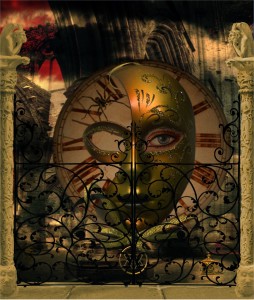
Some readers believe that E.V. Odle was a pen name used by Virginia Woolf , who dabbled in science fiction and sought to protect her credibility as a serious writer. Most consider this an unfounded rumor, and hold that E.V. Odle was Edwin Vincent Odle, a little-known British playwright, critic, and author. Regardless of the author’s identity, Virginia Woolf’s work seems to have influenced the novel. Reviewer Annalee Newitz calls the book “an odd mashup of Virginia Woolf and H.G. Wells” .
13. In vitro fertilization: J.B.S. Haldane, 1924
J.B.S. Haldane was a British scientist who also imagined the future directions of biology in his book Daedulus; or Science and the Future . The work proclaimed how scientific revolution might alter the most private aspects of life, death, sex, and marriage. This was a bold move given the uproar that inventions like birth control were causing in contemporary media.
Haldane predicted the widespread practice of in vitro fertilization, what he called “ectogenesis”. His theory of reproductive technology and his scientific futurism influenced Aldous Huxley’s novel Brave New World (1932).
Haldane also stressed that humans need to make advances in ethics to match our advances in science. Otherwise, he feared, science would bring grief, not progress, to humankind.
14. Teleoperated robot surrogates: Manly Wade Wellman, 1938

Some robot surrogates already exist. See, for example, the Inmoov Robots for Good designed for hospitalized children, the InTouch medical rounding robot for doctors, and the Geminoid human replicas .
15. Microwavable heat-n-eat food: Robert Heinlein, 1948
In Space Cadet , famous sci-fi author Robert Heinlein took the newly invented microwave one step further by predicting the rise of ready-to-eat, microwavable food:
“Theoretically every ration taken aboard a Patrol vessel is pre-cooked and ready for eating as soon as it is taken out of freeze and subjected to the number of seconds, plainly marked on the package, of high-frequency heating required.”
It took a few decades before Heinlein’s vision became an everyday reality.
16. Earphones: Ray Bradbury, 1950
In Fahrenheit 451 , Ray Bradbury described earphones that were much more convenient than the huge headphones of his day:
“And in her ears the little seashells, the thimble radios tamped tight, and an electronic ocean of sound, of music and talk and music and talk coming in, coming in on the shore of her unsleeping mind.”
In-ear headphones were released to the mass market in 1980.
17. Machine intelligence outsmarting humans: Clifford Simak, 1951
In Time and Again (also published as First He Died ), Clifford Simak depicted a chess game between a man and a robot:
“In the screen a man was sitting before a chess table. The pieces were in mid-game. Across the board stood a beautifully machined robotic. The man reached out a hand, thoughtfully played a knight. The robotic clicked and chuckled. It moved a pawn… “Mr. Benton hasn’t won a game in the past ten years…” “… Benton must have known, when he had Oscar fabricated, that Oscar would beat him,” Sutton pointed out. “A human simply can’t beat a robotic expert.”
Simak’s early sci-fi reference of robots or computers being unbeatable at chess occurred four decades before futurist Ray Kurzweil predicted in The Age of Intelligent Machines that a computer would beat the best human chess players by 2000. In 1997, sure enough, IBM’s “Deep Blue” beat Garry Kasparov .
18. iPad: Arthur C. Clarke, 1968
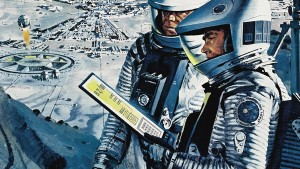
“When he tired of official reports and memoranda and minutes, he would plug in his foolscap-size newspad into the ship’s information circuit and scan the latest reports from Earth. One by one he would conjure up the world’s major electronic papers…Switching to the display unit’s short-term memory, he would hold the front page while he quickly searched the headlines and noted the items that interested him. Each had its own two-digit reference; when he punched that, the postage-stamp-size rectangle would expand until it neatly filled the screen and he could read it with comfort. When he had finished, he would flash back to the complete page and select a new subject for detailed examination…”
19. Electric cars: John Brunner, 1969
Perhaps one of the most prophetic novels ever , John Brunner’s novel Stand on Zanzibar , set in 2010, creates an America under the leadership of President Obomi, plagued by school shootings and terrorist attacks. The EU is in existence, major cities like Detroit become impoverished, tobacco faces backlash but marijuana is decriminalised, and gay and bisexual lifestyles have gone mainstream. The inventions used in society include on-demand TV, laser printers, and electric cars. Brunner believed these cars would be powered by rechargeable electric fuel cells, much as they are today, and that Honda would be a leading manufacturer. Recently, Honda has affirmed that its electric vehicles are a “core technology” .
20. Real-time translation: Douglas Adams, 1979
The amusing little Babel Fish in Adams’ renowned The Hitchhiker’s Guide to the Galaxy brings real-time translation to Arthur Dent and his fellow characters. Several apps now on the market for Android or iOS mimic the Babel Fish’s abilities. One of these apps is Lexifone , which translates from one language to another when someone speaks during a call. Microsoft has also been developing real-time translation for Skype .
21. The ubiquity of the World Wide Web: David Brin, 1990
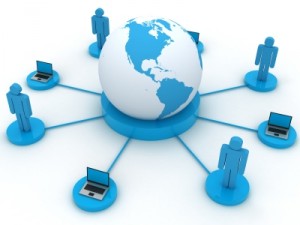
The ongoing role of sci-fi
As futurist Ross Dawson has observed , “Fiction about the future whets our appetite for new technologies. It is how we discover what it is we truly want, driving new developments.”
As the pace of change continues to increase, a statement by s cientist and sci-fi author Isaac Asimov rings truer than ever: “It is change, continuing change, inevitable change, that is the dominant factor in society today. No sensible decision can be made any longer without taking into account not only the world as it is, but the world as it will be.”
Science fiction writers foresee the inevitable. They inspire us to turn fiction into reality, but they also remind us to reflect on the consequences of our actions and remember what is most important to humanity.
Image sources: Steve Jurvetson , Gallica Bibliothèque Numérique , Hannah Banner , U.S. Naval Forces Central Command , George Boyce , Sebastian Dooris , us vs th3m , and SEO
Keynote Speaker
Strategy advisor, influence rankings, privacy overview.

'1984' and 19 other dystopian novels that predicted the future
Science fiction (and the larger genre of speculative fiction to which it belongs) has been obsessed with the future since H. G. Wells first wrote about a time traveler who leaped forward to 802,701 A.D. in “The Time Traveler.” In science fiction, the future offers a blank slate of possibility, a place where humans can travel to distant planets faster than the speed of light, upload their brains to the cloud, or build computers that think like humans. The technology they envision can portend, and occasionally inspire , the real technology of the future.
Dystopias are a different kind of science fiction, ripe with possibility for imagining the most terrible future that could strike humanity. They’re constantly asking “What if?” What if we don’t solve climate change? What if everyone was connected to the internet all the time? What if what’s happening now gets worse? Ray Bradbury once wrote , “People ask me to predict the Future when all I want to do is prevent it. Better yet, build it.” For most writers of dystopia, the goal isn’t to guess what will happen; it’s to provide a cautionary tale to ensure what they envision doesn’t come to pass.
Sometimes, for better or for worse, the futures science fiction writers envision do come to pass. In 1949, George Orwell released “1984,” a novel about an authoritarian government run by “Big Brother” that uses propaganda and surveillance to keep its citizens in line. In January 2017, the book unexpectedly hit the Amazon best-seller list , as have other classic dystopias, as people read them and feel a resonance between the world the novels describe and the reality of today.
Stacker looked at news outlets, book blogs, tech websites, and more to compile a list of 20 dystopia and science fiction books that in one way or another predicted our future. Some imagined a technology that has become fundamental to our everyday lives long before it was invented. Others, like “1984,” discuss themes and present social systems that seem like they were ripped from the headlines, with varying degrees of optimism.
Keep reading to discover which book predicted the moon landing two centuries before it happened, and which book series predicted Donald Trump’s candidacy, and add a few titles to your reading list.
You may also like: Best-selling fiction books from the year you were born
- Author: George Orwell - Date published: June 8, 1949
The oppressive regime George Orwell imagined in “1984” is full of predictions, but among the most famous is its depiction of how governments and other powerful people can work to redefine and eliminate objective truth. Winston, the main character, spends his days in the Ministry of Truth working to edit history to make sure it lines up with whatever the government says are the facts, even if they change every day. In a world of “alternative facts” and fake news clogging up our Facebook feeds , it seems to some people that a world where the government can decide that “2+2=5” isn’t that far away.
The Handmaid’s Tale
- Author: Margaret Atwood - Date published: Sept. 13, 1985
Written during a rise in conservative Christian ideology in the 1980s, Margaret Atwood’s “The Handmaid’s Tale” imagines a totalitarian patriarchal society rooted in Christianity where fertile women (or “handmaids”), of which there are very few, are forced to bear children for men in power. The themes in Atwood’s novel, especially those involving a woman’s lack of bodily autonomy or reproductive rights, have resonated in the modern day as more states have passed laws that ban abortions, limit access to birth control, or make it more difficult for women to access healthcare. Costumes from the television adaption of the show have been used by women as symbols of protest around the world since the show aired.
Frankenstein
- Author: Mary Shelley - Date published: Jan. 1, 1818, revised in 1831 “Frankenstein” is often considered one of the first science fiction novels. The classic tale has also foretold several scientific advancements. Building a monster from human parts certainly resembles organ transplants. A study from 2016 suggests it may have also predicted the evolutionary biology concept of “competitive exclusion,” which holds that life’s ability to expand will be limited when people and animals have to compete for resources, demonstrated by Dr. Frankenstein refusing to build his creation a wife for fear that they’ll create a new breed of creatures that will wipe out humanity.
Neuromancer
- Author: William Gibson - Date published: July 1, 1984
William Gibson’s groundbreaking novel not only created the cyberpunk genre in science fiction but also predicted the internet as we know it. “Neuromancer” coined the word cyberspace , which is described as “a consensual hallucination experienced daily by billions...a graphic representation of data abstracted from banks of every computer in the human system.” Gibson himself resists the label of predicting the future, instead claiming that he’s “generating scenarios ,” some of which just happen to come true.
Hitchhikers’ Guide to the Galaxy
- Author: Douglas Adams - Date published: Oct. 12, 1979
Douglas Adams’ zany, spacefaring “Hitchhiker’s Guide to the Galaxy” series opens with an alien race destroying the Earth to make room for a galactic highway bypass. Luckily, that prediction has yet to come to pass; what he predicted was instantaneous audio translations which technology companies have unveiled over the past several years. In “Hitchhiker’s Guide” the characters looking for fast language translations have to put a Babel fish in their ear , but Skype and Google have opted to use computers instead.
Stand on Zanzibar
- Author: John Brunner - Date published: September 1968
Set in the year 2010, John Brunner’s “Stand on Zanzibar” takes place in a world that looks surprisingly similar to current times . His world faces widespread mass shootings, deeply polarized partisan politics, and simmering racial tensions remain despite some African Americans reaching positions of power. The novel’s chief concern, however, is overpopulation, which has fueled several crises, and the brutal eugenics program that results thankfully looks nothing like actual 2010 America.
The World Set Free
- Author: H. G. Wells - Date published: 1914
The development of the atomic bomb was one of the most significant technological developments of the 21st century; it was also predicted by H. G. Wells 30 years before its invention . In “The World Set Free,” Wells describes uranium hand grenades that can be dropped from planes and explode infinitely after impact. The book might not have only predicted the bomb—physicist Leo Szilard read the book and gave it partial credit for inspiring his discovery of nuclear chain reactions.

The Moon is a Harsh Mistress
- Author: Robert A. Heinlein - Date published: July 1969
“The Moon is a Harsh Mistress” describes a moon colony’s revolt against its leaders on Earth. The book takes many of its cues from the American Revolution, but some have pointed out that Heinlein’s depictions of a diffuse movement led by the people provide insight to insurgency campaigns in 21st-century Iraq and Afghanistan .
From the Earth to the Moon
- Author: Jules Verne - Date published: 1865
One of the early pioneers of science fiction, Jules Verne made several astonishing technological predictions in his books that ultimately came true. “From the Earth to the Moon,” for example, predicts the moon landing over 200 years before it happened; Verne’s story describes a crew of three men who are shot out of a gun to the moon. The details, including the location and name of the launch, the dimensions of the ship, and several calculations Verne provides are incredibly accurate for the time it was written.
Looking Back: 2000–1887
- Author: Edward Bellamy - Date published: January 1888
Edward Bellamy’s novel transports his protagonist to Boston at the beginning of the 21st century (or end of the 20th, depending on how you count it) and plants him in the middle of an egalitarian utopia. In the world of “Looking Back,” women are fully fledged members of the workforce (which would have been unthinkable in the late 1800s) and every American gets a “credit card” which work allows them to access an equal amount of “credit” to make purchases. Though we haven’t reached complete economic equality, the cards otherwise function exactly like the credit cards today.
Ralph 124C 41+
- Author: Hugo Gernsback - Date published: 1925
The Hugo Award, which honors the best of the best in science fiction, probably wouldn’t have been awarded to Hugo Gernsback’s serialized novel “Ralph 124C 41+,” which very few sci-fi fans take seriously today. The book is largely remembered for correctly predicting quite a bit of the technology we use today, including video chat, electric cars, solar power, and radar, not for the story the technology is used in.
2001: A Space Odyssey
- Author: Arthur C. Clarke - Date published: April 28, 1968
“2001: A Space Odyssey” shows one of its characters checking the news on a “Newspad,” a technology, which predicted the tablet computers we use to check the news today. The Newspads used in the movie adaptation, which Stanley Kubrick developed alongside Arthur C. Clarke’s novel, looks strikingly similar to Apple’s iPad; Samsung offered shots from the movie as proof that their Galaxy tablet didn’t violate Apple’s iPad patent in a lawsuit.
- Author: David Brin - Date published: 1990
David Brin’s work is famous in science fiction circles for accurately predicting the future. His 1990 novel, “Earth,” depicts what the world looks like in 2040 and anticipated so many of today’s trends that there’s an entire wiki dedicated to documenting what Brin correctly forecast. Among the things “Earth” got right: the levees breaking on the Mississippi (as they did during Hurricane Katrina), global warming and sea levels rising, and the universal use of the internet.
- Author: Isaac Asimov - Date published: 1951
Considered a science fiction classic, Isaac Asimov’s “Foundation Trilogy” features the Encyclopedia Galactica, which one character describes as “a giant summary of all knowledge” in the world compiled by thousands of researchers. In that way, Asimov’s Encyclopedia works almost identically to Wikipedia, which is edited by thousands of people every day to compile information about pretty much anything you could ever want to learn about.
Heavy Weather
- Author: Bruce Sterling - Date published: September 1994
Long before the Bitcoin boom made headlines and introduced the world to cryptocurrency, Bruce Sterling wrote “Heavy Weather.” Though mostly focused on a group of storm chasers, he dedicates a short passage to an instantaneous electric currency “unbacked by any government, untraceable, completely anonymous, [and] global in reach.” Sterling accurately describes how today’s cryptocurrencies work, over a decade before an anonymous programmer developed the technology that would make it possible.
Brave New World
- Author: Aldous Huxley - Date published: 1932
The bleak future Aldous Huxley paints in “Brave New World” features a world where babies are genetically engineered in labs and sorted into groups based on their abilities as children. This possibility seems closer than ever with the announcement that CRISPR gene-editing technology had been used on babies . Some of Huxley’s predictions have already become reality; the mood-altering soma drugs used by almost every adult in the book share an eerie similarity to the widespread prescription use of Valium and other psychotropic drugs .
The Drowned World
- Author: J. G. Ballard - Date published: 1962
In British author J. G. Ballard’s most prescient science fiction novel, “The Drowned World,” London and other cities are entirely flooded (but almost no water remains anywhere else) and tropical temperatures have enveloped the globe thanks to industrial pollution. Scientists have found that climate change has led to increased droughts, heat waves , and flooding . According to a 2018 report, if humanity doesn’t curb emissions by 2030 , we won’t have to wait for 2145 for Ballard’s post-apocalyptic vision to be wholly realized.
- Author: Sabrina Vourvoulias - Date published: Oct. 15, 2012
“Ink” imagines an America where foreign-born people are “inked” by the government to indicate their immigration status; these immigrants are subjected to unlawful deportations, laws that forbid speaking languages other than English, and later, unlawful confinement. The book seemingly portended the Trump administration’s crackdown on legal and illegal immigration and the anti-immigrant sentiment that surged during his presidency, four years before he was elected.
- Author: M.T. Anderson - Date published: Sept. 23, 2002
M.T. Anderson’s bleak young-adult dystopia that posited a world where people access information through connects implanted directly in their brains. While our technology hasn’t quite progressed that far, Anderson’s future posited that these “feeds” would give people constant access to information and the ability to stay connected, at the price of being constantly bombarded by advertising tailored to their preferences by data-mining corporations. Facebook and Twitter haven’t directly implanted themselves in our brains, but given that most people check their smartphones dozens of times a day, it’s close enough.
Parable of the Talents
- Author: Octavia Butler - Date published: November 1998
Octavia Butler conceived of her “Earthseed” series as her “if this goes on” book and extrapolated what the world would look like in the mid-2020 and beyond from the headlines of the '90s. The second book, “Parable of the Talents,” takes place in 2032 and features, among other things, a movement of white violence stirred up by a Texas senator running for president on a platform to “make America great again.” To overcome their own Trumpian character, Butler’s protagonist, a Black woman, bands with other people of color and starts her own community, suggesting it’s necessary to work together to combat white nationalist violence.
Trending Now
Best black and white films of all time.

30 best nature documentaries of all time

Best sitcoms of all time

50 best colleges on the East Coast

Predictions of Science Fiction That Came True
- First Online: 02 August 2019
Cite this chapter

- Mónica Estébanez Camarena 23 , 24
Part of the book series: Southern Space Studies ((SOSPST))
924 Accesses
The idea of other worlds and realities beyond what we can see in the sky has always stimulated the public imagination. In this way, space has had an important place in popular culture since early times, before the beginning of the space race. Representations of this can be found in many forms of arts, including cinema, plastic arts, music and literature.Whether popular culture inspires scientists in their work or technological developments expand the limits of writers and artists’ imagination, there is an undeniable interplay between both fields. From the astonishingly correct predictions in Jules Verne’s novel From the Earth to the Moon , to the early visions of space depicted in Stanley Kubrick’s 2001: A Space Odyssey, this chapter presents a compilation of “predictions” of science fiction that came true in the space industry.
This is a preview of subscription content, log in via an institution to check access.
Access this chapter
- Available as EPUB and PDF
- Read on any device
- Instant download
- Own it forever
- Compact, lightweight edition
- Dispatched in 3 to 5 business days
- Free shipping worldwide - see info
- Durable hardcover edition
Tax calculation will be finalised at checkout
Purchases are for personal use only
Institutional subscriptions
The Oxford dictionary is made available by Oxford University Press on the website https://en.oxforddictionaries.com .
The whole interview is available in YouTube at the following link: https://www.youtube.com/watch?v=5F4WvaiyQTw .
Verne J. (2005). From the Earth to the Moon . Barnes & Nobles Books. New York: Barnes & Nobles Publishing, Inc.
Howell E. (2014). Apollo 11 Flight Log, July 23, 1969: Preparing for Landing . SPACE.com. [ONLINE] Available at: https://www.space.com/26617-apollo-11-flight-log-july-23-1969.html .
Taylor Red N. (2013). Konstantin Tsiolkovsky: Russian Father of Rocketry . SPACE.com. [ONLINE] Available at: https://www.space.com/19994-konstantin-tsiolkovsky.html .
Wireless World magazine was a British electronics journal that began in April 1911 under the name Marconigraph . It was renamed as Wireless World in 1913 and Electronics & Wireless World in 1984. Finally, the journal adopted its current name, Electronics World , in 1996. An archive of the 1911–1994 issues is available at: https://www.americanradiohistory.com/Wireless_World_Magazine.htm .
Clarke A. (1945). ‘The Space-Station: Its Radio Applications’ in Exploring the Unknown. Selected Documents in the History of the U.S. Civil Space Program Volume III: Using Space . Eds: Logsdon J M, Launius R D, Onkst D H and Garber S J, pp. 12–15.
Clarke A. (1945). ‘Extra-Terrestrial Relays: Can Rocket Stations Give World-Wide Radio Coverage?’ in Exploring the Unknown. Selected Documents in the History of the U.S. Civil Space Program Volume III: Using Space . Eds: Logsdon J M, Launius R D, Onkst D H and Garber S J, pp. 16–22.
Woman in the Moon/Frau im Mond. (1929). [Video] Germany: Fritz Lang.
Otfinoski, S. (2006). Great Inventions. Rockets. Marshall Cavendish. New York: Benchmark, p. 18.
The film launch sequence referred to here can be watched on YouTube at: https://www.youtube.com/watch?v=I8gu1p939a4 .
A video of the launch of Explorer 1 is available at: https://en.wikipedia.org/wiki/File:1958-02-03_First_US_Satellite_Launched.ogv . In the clip, the lift-off moment referred to in the text takes place in the minute 1:13.
Hutchings Goddard R. (2017). Dr. Robert H. Goddard, American Rocketry Pioneer. [ONLINE] Available at: https://www.nasa.gov/centers/goddard/about/history/dr_goddard.html .
Taylor Red N. (2013). Hermann Oberth: German Father of Rocketry . SPACE.com. [ONLINE] Available at: https://www.space.com/20063-hermann-oberth.html .
2001: A Space Odyssey. (1968). [DVD] USA: Stanley Kubrick.
Clips of the space station depicted in 2001: A Space Odyssey are available on YouTube at: https://www.youtube.com/watch?v=AEo9ZzT5Hos (outer view of the station) and https://www.youtube.com/watch?v=vG6CjOFlo7A (inner view of the station).
NASA. (2014). 1968 Science Fiction is Today's Reality . [ONLINE] Available at: https://www.nasa.gov/mission_pages/station/main/2001_anniversary.html .
Author information
Authors and affiliations.
Delft University of Technology, Delft, The Netherlands
Mónica Estébanez Camarena
University of Cape Town, Rondebosch, South Africa
You can also search for this author in PubMed Google Scholar
Corresponding author
Correspondence to Mónica Estébanez Camarena .
Editor information
Editors and affiliations.
Department of Electrical Engineering/SpaceLab, University of Cape Town, Rondebosch, South Africa
Annette Froehlich
Rights and permissions
Reprints and permissions
Copyright information
© 2020 Springer Nature Switzerland AG
About this chapter
Estébanez Camarena, M. (2020). Predictions of Science Fiction That Came True. In: Froehlich, A. (eds) Outer Space and Popular Culture. Southern Space Studies. Springer, Cham. https://doi.org/10.1007/978-3-030-22656-5_12
Download citation
DOI : https://doi.org/10.1007/978-3-030-22656-5_12
Published : 02 August 2019
Publisher Name : Springer, Cham
Print ISBN : 978-3-030-22655-8
Online ISBN : 978-3-030-22656-5
eBook Packages : Engineering Engineering (R0)
Share this chapter
Anyone you share the following link with will be able to read this content:
Sorry, a shareable link is not currently available for this article.
Provided by the Springer Nature SharedIt content-sharing initiative
- Publish with us
Policies and ethics
- Find a journal
- Track your research
chevron_left Back
- US - English
- China - 简体中文
- India - English
- Japan - 日本語
- Malaysia - English
- Singapore - English
- Taiwan – 繁體中文
Suggested Search
Login / Register
Unable to login? Visit SSO Login Support
Future shock: 11 real-life technologies that science fiction predicted
Micron Technology
Truth can be stranger than fiction, yes, but what about science fiction? Some of the most outlandish scenarios imagined by writers of films, TV shows, and books have come true, and they were actually inspired by science fiction. In fact, without writers to imagine them, digital technologies such as video chatting, cell phones and tablets, drones, and robots might not even exist.
Science fiction predicted credit cards, television and the 1969 lunar landing. Bionic limbs, military tanks, antidepressants and submarines emerged from sci-fi, too. Even the concept of the internet originated in a book published more than 30 years ago: “Neuromancer” by the author William Gibson, who coined the term word “cyberspace” and defined it (quite presciently) as “a consensual hallucination.” Gibson, who has been hailed as a modern-day Nostradamus, also foretold reality TV and nanotechnology, among other marvels.
Some science fiction predictions have been dystopic, like the villainous computer HAL 9000 in the Stanley Kubrick film “2001: A Space Odyssey.” More than 50 years after the film’s 1968 debut, HAL 9000 continues to serve as a warning of the malign potential of artificial intelligence.
Many other predictions, however, have pointed to tech’s potential for enriching and enhancing our lives. From the hologram table in George Lucas’s “Star Wars“ (1977) to video chats and flying cars in the 1960s TV show “The Jetsons,” so many modern-day digital wonders and wannabes were first imagined by — and inspired by — people who weren’t scientists at all, but writers.
Who knows what the future might hold? Science fiction writers do, it seems. The rest is up to science—enabled by advances in technology.
Imagining the Future
Military tanks, computing tablets, submarines, bionic limbs, psychotropic medications: The list of science fiction predictions is long enough to fill a book—and in fact, entire books have been written on this subject. But to foresee digital technologies before computers even existed? How impressive is that?
The connection of sci-fi to technology is far from coincidental, it turns out. Researchers find inspiration in the books, TV shows, and movies that imagine the future. According to one study , science fiction writers often consult with scientists, and what they write influences tech research and provides ideas in a number of ways:
- Modifications to, or extensions of, the human body
- Human-computer interactions
- Human-robot interactions
- Artificial intelligence
If you enjoy any of these 11 technologies, be sure to thank a science fiction writer!
1. Mobile phones: The TV show “Star Trek” debuted a flip phone, the communicator, in 1966. Thirty years later, Motorola launched the first mobile flip phone, which, in a nod to the series, it dubbed the StarTAC . Interestingly, the creators of “Star Trek” also gave crew members the tricorder, a hand-held device that gathered and stored data from the planets Captain Kirk and his crew visited. Had the creators thought to combine the two, they might have prefigured the smartphone.
2. 3D holograms: Perhaps inspired by the “Star Wars” scene in which the robot R2D2 projects a holographic image of Princess Leia asking Obi-Wan Kenobi for help,researchers have been busily working to bring this technology to life. Now, holography is offered in a number of applications, and in 2019, it will bring rock-and-roll icons Buddy Holly and Roy Orbison “back to life” in concert, backed by live musicians.
3. 3D food printing: The eponymous family in the animated TV show “The Jetsons” had a home food machine that produced full meals. “Star Trek” had the replicator, which could print food literally from thin air in mere seconds. Now, Columbia University has created 3D printing technology that can produce entire cooked meals from prepared ingredients rather than from molecules — although that technology is in the works as well. And for dessert, the race is on to invent the ultimate chocolate printer .
4. Domestic robots: Czech author Karel Čapek coined the term “robot” in 1920 in his famous science fiction play, “R.U.R (Rossum’s Universal Robots).” The word stems from “robotnik,” the Czech word for “forced worker.”
In “Helen O’Loy,” Lester del Rey’s 1938 story, two men invent Helen, a robot domestic servant, and fall in love with it. And Philip K. Dick’s 1955 short story “Nanny” features a robot that takes care of children so well that the family it serves resists attempts to convince it to upgrade to a newer model. (Spoiler alert: Disaster ensues.)
But the most widely known robot servant in science fiction is probably the Jetsons’Rosie, with its ever-present feather duster in hand and funny brrp-bing! punctuations when speaking. Today, we have disc-shaped robotic floor cleaners, said to do their job very well, but no multitasking, artificially intelligent robots serve our households yet. Researchers say the technology is in development, possibly available commercially in about a decade .
5. Autonomous cars: Cars with “robot brains” would be a central feature of the 2014 World’s Fair, science fiction writer Isaac Asimov predicted in The New York Times in 1964.
"Much effort will be put into the designing of vehicles with 'robot-brains' – vehicles that can be set for particular destinations and that will then proceed there without interference by the slow reflexes of a human driver," Asimov wrote.
James Bond movies, too, envision automobiles that drive themselves with a modicum of human intervention. Sitting in the backseat of his BMW 750IL, agent 007 controls the car using his phone in 1997’s “Tomorrow Never Dies.” In fact, Bond always has the coolest ride around, with lots of features we’re seeing today and will likely see tomorrow. A number of automakers and some tech companies are developing fully autonomous vehicles with an eye toward getting them on the road by 2025.
6. Flying cars: The fastest way to get from Point A to Point B is to travel as the crow flies — in a line. Earth’s hilly, watery terrain makes that straight shot impossible much of the time, slowing us down. Is it any wonder that science fiction takes us to the skies ? Flying cars made an early appearance Bond creator Ian Fleming’s 1964 novel (and subsequent 1968 film) “Chitty-Chitty-Bang-Bang: The Magical Car.”
Fleming reportedly based his children’s tale on the real-life Chitty Bang Bang cars designed by Count Louis Vorow Zborowski, a British race car driver and automobile engineer. The real-life Chitties didn’t fly, but the final car in the series, Chitty 4 (rechristened “Babs”), did break the land-speed record in 1926 at 171 mph. The current record , set in 2018, is 448.757 mph—but who knows how fast flying cars will travel?
“Autonomous urban aircraft” is under development privately as well as by the military and NASA. These flying vehicles, capable of carrying at least one human and therefore not considered drones, are predicted for common use by 2040.
7. Drones: Frank Herbert’s 1965 novel “Dune” envisions a tiny “hunter seeker” assassin drone, and autonomous flying vehicles are everywhere in Star Wars. In fact, a number of sci-fi books and movies depict drones long before they were in actual use, first for military purposes in the last few decades, and more recently, for commercial and recreational purposes.
The U.S. Federal Aviation Administration reportedly issued its first commercial drone permit in 2006 and gave out 16 over the next eight years. Then, interest literally skyrocketed after Amazon CEO Jeff Bezos’ 2013 announcement that the company was considering using drones to deliver packages. Then in 2018, the agency issued 100,000 remote pilot certificates , required to fly a drone.
Uses for drones have grown accordingly , including aerial photography, emergency response and agricultural precision crop monitoring. And, as predicted in Raymond Z. Gallun’s 1936 short story “The Scarab” and popularized by the TV series “Black Mirror,” robo-bees may someday help pollinate our food crops: Wal-Mart filed a patent application in 2018 for tiny drones that can detect and spread pollen.
8. Virtual reality: Credit goes to Stanley G. Weinbaum’s 1935 story “Pygmalion’s Spectacles” for portending VR, complete with goggles. Steven Lisberger’s 1982 film “Tron” also imagines entering a digital world, and Neal Stephenson’s 1992 novel “Snow Crash” describes VR in a way that rings familiar today:
“Through the use of electronic mirrors inside the computer, this beam is made to sweep back and forth across the lenses of Hiro’s goggles, in much the same way as the electron beam in a television paints the inner surface of the eponymous Tube. The resulting image hands in space in front of Hiro’s view of Reality….
So Hiro’s not actually here at all. He’s in a computer-generated universe that’s drawing onto his goggles and pumping into his earphones.”
Today’s VR looks very much as these writers imagined it, offering escape into alternative worlds by means of goggles that provide immersive 3D images and sound. Haptic gloves allow us to experience touch in our alternative universe, and researchers are working to bring flavors and aromas to the experience as well.
9. Smart watches: Fans of the comic strip “Dick Tracy” glimpsed the future in 1946 when creator Chester Gould gave his police detective a two-way wrist radio . In 1964, Gould added video, a feature that smart watches don’t sport today but that seems inevitable.
Perhaps Gould’s inspiration for the video watch came from “The Jetsons,” in which boy Elroy Jetson, in 1962, used his watch to view “The Flintstones,” another animated series produced by the same company, and to make and receive calls.
10. Video calls: With the use of Zoom; Facetime; WeChat in China; and other video-chat apps for business meetings and personal calls — video callers globally spend 340 million minutes daily on WhatsApp alone — it’s difficult to imagine how wondrous (and impossible) this technology seemed not too long ago.
Seeing the face of the person you’re speaking with on the phone has long been the stuff of science fiction, starting with the 1911 novel “Ralph 124C 41+: A Romance of the Year 2660” by Luxembourgish-American writer Hugo Gernsback, which featured a video-conferencing device called the “telephot.” The German film “Metropolis,” made in 1927, depicted a wall-mounted videophone, as did “2001: A Space Odyssey.”
11. Ear buds: Ray Bradbury’s 1953 novel “Fahrenheit 451” envisions seashells and thimble radios tucked into people’s ears, as well as Bluetooth-like headsets, producing "an electronic ocean of sound, of music and talk and music and talk, coming in on the shore of [your] unsleeping mind.” How does that not sound like wireless ear buds?
Some predict that speech recognition, powered by machine learning (a form of artificial intelligence) will replace typing on keyboards or keypads altogether. Some predict that the market for the technology will grow nearly threefold by 2024, to $21.5 billion (up from $7.5 billion in 2018).
Dreams Come True Via Memory and Processing
For these technologies to work, they need ample memory, storage and superfast processing capabilities. Virtual reality, for instance, must process vast amounts of data at the speed of thought without dropping frames, which causes motion sickness. Artificial intelligence, which drives nearly every technology on our list, needs to “think” as fast as we do, or we won’t consider it intelligent at all—a capability that 5G technology will enable.
Micron is meeting the challenges of tomorrow’s technologies with solutions capable of storing more and more data in increasingly smaller spaces and moving it more quickly to computer processors. These include high-bandwidth GDDR6 graphics memory, developed for video gaming but used in many diverse applications; fast DRAM; high-density NAND flash memory; and our lightning-quick solid-state drives.
What’s next among sci-fi inspired technologies? Time travel à la Spanish director Nacho Vigalondo’s “Timecrimes” or H.G. Wells’s “The Time Machine”? A “beam me up” teleporter like the one used in “Star Trek”? An invisibility cloak like Harry Potter wears in the J. K. Rowling series? Voyages to other planets or even solar systems?
These technologies and others have yet to emerge — but if they do, chances are they’ll use Micron products. Now and in the future, Micron continually pushes our hardware to be the best, leading the pack in memory and storage solutions and paving the way for tomorrow’s science fiction predictions.
The films, TV shows, books, and plays mentioned in this article are the artistic works of their creators. Micron has no tie to their creation. The views and opinions expressed in those works do not reflect those of Micron Technology. Mention of these works are for reference only and does not imply a promotion or endorsement from Micron.
In order of appearance: “Necromancer,” William Gibson, 1984
“2001: A Space Odyssey,” MGM, 1968
“Star Wars,” Lucasfilm, 1977
“The Jetsons,” Hanna-Barbera, 1962-1962, 1985-1987)
“Star Trek,” Gene Roddenberry, 1966-1969
“Roy Orbison & Buddy Holly: The Rock ‘N’ Roll Dream Tour,” Base Hologram, 2019
“R.U.R. (Rossum’s Universal Robots),” Karel Čapek, 1921
“Helen O’Loy,” Lester del Rey, 1938
“Nanny,” Philip K. Dick, 1955
“Tomorrow Never Dies,” MGM/United International Pictures, 1997
“Chitty-Chitty-Bang-Bang: The Magical Car,” Ian Fleming, 1964-1965 (3 volumes)
“Chitty Chitty Bang Bang,” United Artists Pictures, 1968
“Dune,” Frank Herbert, 1965
“The Scarab,” Raymond Z. Gallun, 1936
“Black Mirror,” Channel 4, 2011-2014; Netflix, 2016-present
“Pygmalion’s Spectacles,” Stanley G. Weinbaum, 1935
"Tron," Lisberger-Kushner Productions, 1982
"Snow Crash," Neal Stephenson, 1992
"Dick Tracy," Chester Gould, 1931-1972; Various illustrators, 1972-present
"The Flintstones," Hanna-Barbera, 1960-1966
"Ralph 124C 41+ : A Romance of the Year 2660,"Hugo Gernsback, 1911
"Metropolis," UFA, 1927
"Fahrenheit 451," Ray Bradbury, 1953
"Her," Annapuma Pictures, 2013
“Timecrimes,” Karbo Vantas Entertainment, Zip Films, Fine Productions, Arsenico PC, 2007
"The Time Machine," H. G. Wells, 1895
Harry Potter series, J. K. Rowling, 1997-2007
March 1, 2014
Asimov’s Predictions from 1964: A Brief Report Card
The future of technology was relatively easy to foresee. Human nature wasn’t
By David Pogue
Predictions about technology's future are almost always doomed. According to 2001: A Space Odyssey , for example, humans should be making flights to the outer reaches of our solar system. Per 1984 , by now we should have become a society of brainwashed drones, toiling under constant surveillance for faceless overlords. Clearly, that would never—hey, wait a second!
Nevertheless, Isaac Asimov, the revered science-fiction author, made a stab at describing our lives today—back in 1964. In a New York Times article 50 years ago, Asimov called his vision “Visit to the World's Fair of 2014.” Now it is, in fact, 2014. Shall we dust off his little time capsule and see how well his predictions fared?
You might assume that his projections fall into two categories: the ones that came to pass and those that didn't. Give the guy credit for anticipating self-driving cars, video calling, the widespread use of nuclear power and single-duty household robots. (He didn't exactly name the Roomba, but he did at least propose “robots for gardening work.”)
On supporting science journalism
If you're enjoying this article, consider supporting our award-winning journalism by subscribing . By purchasing a subscription you are helping to ensure the future of impactful stories about the discoveries and ideas shaping our world today.
Asimov also worried at length about overpopulation, estimating the 2014 world population to be 6.5 billion and the U.S. population to reach 350 million. He came very close; the actual world population is about 7.1 billion, and the U.S.'s tally is 317 million.
And, yes, he also got a lot wrong. He foresaw underground and underwater homes becoming popular, along with “transportation that makes the least possible contact with the surface”—cars and boats that levitate on jets of compressed air.
His weirdest prophesies concern our desperate suffering “from the disease of boredom,” once robotics and automation have taken away most of our jobs. “The lucky few who can be involved in creative work of any sort will be the true elite of mankind, for they alone will do more than serve a machine.” If technology ever does buy us more leisure time, technology will also expand to fill it. (A streaming Netflix movie, anyone?)
But many of Asimov's prognostications also fall into a third category that you might not have expected: technologies that are indeed feasible today—but aren't yet commonplace.
By now he thought that windows would be little more than “an archaic touch,” thanks to the popularity of glowing wall panels. Sure, we have flat-screen technology—but we still like to look outside at real grass, sky and squirrels.
In downtown areas, he predicted moving sidewalks. We've built those at airports but skipped them on city streets.
He also figured that our diets would include “processed yeast and algae products” such as “pseudosteak”—an item that might give even tofurkey converts pause. And he foresaw moon colonies established by 2014, with Mars colonies already in the planning stages. In each case, what kept his hopeful prediction from coming true has not been technological; instead we seem to lack the will, desire or courage to make them a reality.
His dream of “large solar-power stations” operating in the desert has been slow to arrive. But stations are finally being built, as economic and political obstacles fall.
Another example: he gives us, the future humans, more credit than we deserve for tackling overpopulation. It must have seemed logical to anticipate “a worldwide propaganda drive in favor of birth control”—but opposition to contraception remains strong.
Asimov's predictions illustrate three lessons for those who would predict the future. First, almost every new technology takes longer to arrive than sci-fi writers imagine.
Second, you'll never hit all the big ones; the history of technology is framed by enormous zigs or zags—consider, for instance, the Internet—that not even Asimov saw coming.
And third, many attractive or logical developments never materialize, thanks to our own human failings. The fault, dear Isaac, is not in our engineering but in ourselves.
David Pogue is the anchor columnist for Yahoo Tech and host of several NOVA miniseries on PBS.

Suggestions

13 Times Science Fiction Predicted the Technology We Have Today

Science fiction as a genre is recognized for its frequent inclusion of futuristic technologies, both fantastical and scientifically plausible. Sometimes, these technologies that authors and directors envision can move from the realm of impossibility and become a reality. With the advancement of technology, many predictions have turned out to be right — in some cases, eerily so. A surprising number of everyday items and modern knowledge were once just fictional ideas; here’s a look at some science fiction predictions that came true.
1. FaceTime
The 1968 movie “2001: A Space Odyssey” was an ambitious and groundbreaking film that exposed the world to technological ideas that seemed unthinkable at the time. The plot is centered around an artifact that connects past and future events and is based on a short story by Arthur C. Clake , a renowned science fiction writer. When it was released in 1968, there was no such thing as video calling. There are many absurd technologies in the film, but many of them were eventually invented, specifically FaceTime. One of the people on the space station video calls their family down on Earth in the movie, foreshadowing astronauts in the 21st century.
2. Moon Landing
Long before Neil Armstrong voiced his famous line as he set foot on the Moon, Jules Verne wrote the novel “From Earth to the Moon” in 1865. Throughout history, countless individuals have gazed at the moon and fantasized about visiting it. What made Verne’s science fiction story distinct was that he envisioned a spacecraft shaped similarly to Apollo 11 . Also, ironically, both Verne’s characters and the Apollo program launched from Florida.
3. Mobile Phones and Tablets
Of all the things listed here, phones and tablets are among the most widespread today. The original “Star Trek” featuring William Shatner includes handheld mobile phones without cords, and in “2001: A Space Odyssey,” the characters use tablets. It wouldn’t be until decades later that the first phones and tablets would debut.
4. The Internet
Yes, the highly popular, addicting and life-essential tool called the internet was foretold through science fiction and by an unexpected person. William Gibson’s 1984 novel, “Neuromancer,” written just before the internet’s dawn, predicts the World Wide Web among other technologies. Far before that, though, in 1898 Mark Twain wrote a short story about a concept similar to the internet. Imagine a world where his thought never came to fruition.
5. Antidepressants
Probably one of the most surprising things on this list is antidepressants. The science fiction novel that predicted using such drugs is Aldous Huxley’s “Brave New World” in 1932. The antidepressants we have now may differ in usage and effects, but Huxley can still be credited with thinking of them before they actually came to be.
6. Earphones
Ray Bradbury’s 1953 science fiction novel “Fahrenheit 451” depicts thumb-sized earphones called “seashells,” radically different from that era’s large, bulky headphones. Earphones like AirPods and Beats are now essential devices that most people cannot live without. Like mobile phones, small earbuds would seem like a foreseeable invention to modern readers, but it took another 50 years for the devices to first appear.
7. Self-Driving Cars
Self-driving cars have yet to reach the roads unassisted and unmonitored. However, there are plenty of artificial intelligence devices and features in cars that automate driving. Many companies are still working on perfecting self-driving vehicles, and in practice, they are a (albeit imperfect) reality. A few science fiction sources foresaw this invention long before it arrived: Issac Asimov , for example, predicted vehicles with “robot brains” in 1964. Also, the 1990 movie “Total Recall” starring Arnold Schwarzenegger features self-driving cars.
8. Transplants
In 1818, author Mary Shelley predicted technology capable of organ transplants that could cure death. Her novel “Frankenstein” is widely considered the first recognizable science fiction story, and it contains many elements that present futuristic technologies, one of them being the organ transplant.
9. Credit Cards
Yet another tool people use daily is credit cards. Concepts from Edward Bellamy’s 1887 novel, “Looking Backward,” and later George Orwell’s “1984” in 1949 are comparable to them. The widespread usage of credit cards didn’t come until the second half of the 20th century.
10. Genetic Engineering
Charles Darwin wrote about “descent with modification” during the 1800s, and Gregor Mendel did a rudimentary form of genetic engineering with pea plants in the same century. Still, the type of genetic engineering done in the 21st century is more complicated, and humans can now be genetically altered. Science fiction used human genetic modification as a plot device before CRISPR and other technologies ever surfaced. “Brave New World” also depicts a world where humans are genetically altered to fit classes.
11. Atomic Bomb
Perhaps the most terrifying science fiction prediction to become a reality is the atomic bomb. Before World War II, such weapons were theorized but never put to the test. However, an author speculated on bombs of similar magnitudes and composition well before then. H.G. Wells , another big name in science fiction, wrote about nuclear fallout and the devastating effects atomic weapons could have in 1914. His novel “The World Set Free” includes a uranium-based bomb deployed via plane, eerily similar to the real-life American bombs dropped on Japan during the war.
12. 3D Printers
A more modern piece of machinery, 3D printers, existed in science fiction before they ever hit the drawing board or market. In the 1990 film “Darkman,” a 3D printer is used to fix the hero’s disfigured face. Simultaneously, “Star Trek: The Original Series” presented a slightly different kind of printing where food and items could be atomically created in a replicator. While today’s commercialized 3D printers can’t replicate food just yet, some can print biological material.
13. Virtual Reality
The 1992 film “Lawnmower Man” imagined virtual reality devices and headsets pivotal to the movie. The headsets were similar to those seen today. Another author who theorized that the future could contain computer-generated realities was Philip K. Dick in a 1977 conference . He also talked about a world akin to the movie “The Matrix.” Amid all these predictions that have come true, let’s hope that particular thought of his stays a thought.
- 2001: A Space Odyssey
- Brave New World
- credit cards
- moon landing
- science fiction
- self-driving cars
- virtual reality
Joseph Gorzka III, University of Virginia
Writer profile, joseph gorzka iii, university of virginia english and east asian studies.
A student at the University of Virginia, an avid reader and a dabbler in the writing arts.
Leave a Reply
Your email address will not be published.
Save my name, email, and website in this browser for the next time I comment.
Related Posts

The Future of Gambling: Online Sites and Virtual Casinos

The Islamic Blueprint of Dune

The Decade-Defining Fashion & Hair in “Star Trek”

‘Star Trek’: Jake Sisko’s Coming of Age Story

‘Stargate’ May Be Sci-Fi’s Most Self-Aware Franchise

‘Brave New World’ Is an Eerily Familiar Dystopia

Loneliness Epidemic: In the OASIS of “Ready Player One”

Modern Dystopia: The Harrowing Reality Of Big Brother
Don't miss.

Exploring the “Obsessed Artist” Trope in Film

The Latin Lover Is Back and He Has A “Mustache Goatee Combo”

TV’s Future Golden Boy: Percy Jackson, The Hero You’ve Been Waiting For
The impact of listening to indigenous voices in 2024 america.

Spanish Rock Band Airú Sparkles On Their First U.S. Tour

9 predictions from old sci-fi movies that actually came true
- We looked at some of the best sci-fi movies in history to see what kinds of predictions they made about technology and the world.
- Many predictions are hilariously inaccurate, but some have proven eerily correct decades later.
- Memorable movies like "Blade Runner," "The Terminator," and "2001: A Space Odyssey" predicted modern-day tech like military drones and cell phones.
- Visit Business Insider's homepage for more stories .

Not all science fiction films age well, and often the predictions they make are hilariously misguided.
1987's "The Running Man," for example, contended that in the year 2019, we'd be watching battle royale-style murder on live television.
2019 is also the year that "The Island" predicted human clones would be farmed like cattle for their organs — and that film hit theaters a mere 14 years ago.
But some classic sci-fi films made rock-solid predictions that proved eerily accurate decades later. Movies such as "Blade Runner," "The Terminator," and "2001: A Space Odyssey" are all worth revisiting for the modern-day technology they predicted.
Despite some great contenders from the last decade or two, we established the drinking age rule for this list: We looked only at movies that were 21 years or older (so tough break, 2002's "Minority Report").
Here are nine predictions from old sci-fi movies that actually came true.
Space travel — 'Le Voyage Dans La Lune,' 1902
It's hard to make the case that any particular work of fiction predicted the general concept of space travel. Jules Verne may well have been the first person to write about it in any sort of modern, technological way with his 1865 novel "From the Earth to the Moon," but since then, countless films have featured travel to the moon or beyond.
Even so, " Le Voyage Dans La Lune " deserves special mention. With the movie camera barely 10 years old and the first cinema still three years away from a grand opening, French filmmaker Georges Méliès made a 13-minute, special effects-laden movie about explorers who travel to the moon in a cannon-propelled space capsule.
It's remarkable for many reasons. The subject matter is inventive, the visual effects are charming and downright iconic, and the conceit of firing a rocket out of a canon is not as far-fetched as it might seem to viewers accustomed to Space X launches.
In fact, the "space gun" — ballistically firing a satellite into orbit from the equivalent of a giant canon — has been explored for decades. In the 1960s, under the auspices of Project HARP, the Navy used a 100-caliber gun to fire 400-pound projectiles into suborbital trajectories that reached a height of 110 miles. So the idea, though impractical, is far from crazy.
No, we're unlikely to ever fire people into space from a canon. But "Le Voyage Dans La Lune" certainly ignited viewers' imaginations and paved the way for Neil Armstrong and Apollo 11.
Robots — 'Metropolis,' 1927
Though relatively unknown to mainstream movie audiences, sci-fi fans will have no trouble recognizing the iconic 1927 film "Metropolis."
From the vantage point of 2019, this film isn't easy to watch, since it's a silent, black-and-white film that runs well over two hours. (Though if you're so inclined, you certainly can watch Metropolis in its entirety on YouTube .)
And Metropolis broke a lot of fresh ground, including the first on-screen depiction of robots. In the film, an inventor with an uncanny 1920's resemblance to Doc Brown crafted a metallic humanoid robot who is then "reskinned" to resemble Maria, a character in the film.
Today, we take the inevitability of robots — and even human-like androids in particular — for granted. But as novel as this was at the time, today we are virtually overrun with increasingly realistic androids.
In 2014, Japan saw the debut of " Kodomoroid ," a robot newscaster, and Osaka University's Professor Hiroshi Ishiguro has unveiled an android named Erica who is startlingly realistic. At the same time, robots like Boston Dynamics' Atlas and Honda's Asimo demonstrate that walking, running, opening doors, and even gymnastics are on the robot menu.
Earbuds — 'Fahrenheit 451,' 1966
Ray Bradbury's iconic novel "Fahrenheit 451" has long been required reading for high schoolers everywhere, and François Truffaut tried his hand at making a film version in 1966.
Firemen never took on the role of starting fires, but that conceit wasn't intended to be taken as a prediction — it's a satirical parable. But there is a fascinating piece of technology in this film that sagely predicts the rise of earbuds and the modern earbud culture.
In "Fahrenheit 451," "seashells" are described as "thimble radios tamped tight, and an electronic ocean of sound, of music and talk coming in, coming in on the shore of her unsleeping mind." In 1966, the most personal audio available was the transistor radio. And though headphones existed, they were large and bulky affairs. Bradbury and Truffaut envisioned a world with tiny, thimble-sized earbuds that played private audio — both music and talk.
It wouldn't be until 2001 and the first Apple iPod that people started wearing seashells, submersing themselves in music and podcasts just like the film depicted.
Skype — '2001: A Space Odyssey,' 1968
The list of things that "2001: A Space Odyssey" predicted could probably fill an article all by itself, from tablet computers to space tourism.
But one element in the film stands out: Skype .
To be fair, no one in "2001" actually logs into the Microsoft-operated video chat service. But video calling is featured prominently in the movie, such as when Dr. Heywood Floyd calls his family from a space station orbiting the earth.
There's even more innovation in this scene: Floyd inserts what looks like a credit card in the videophone to start the call, predicting their eventual ubiquity — in the 1960s, credit cards weren't nearly as common as they are today.
And the two-minute call from space cost $1.70, thoguh we can't figure whether that's a bargain or not.
The tech world has had a 50-year love affair with the concept of videophones, and numerous efforts were made to make them a reality. The Picturephone was first demonstrated at the 1964 World's Fair, and it surfaced at retail again and again over the years — such as AT&T's 1982 Picturephone and the 1992 VideoPhone 2500 .
All were failures, but the internet, mobile broadband, and smartphones all conspired to eventually make video calling via apps like Skype and FaceTime everyday tools.
Mobile phones — 'Star Trek,' 1966
Purists might consider this one a cheat, but we'd be remiss not to include "Star Trek" in the list, since it predicted more technology than Leonardo di Vinci's notebook.
Let's be clear: "Star Trek" started as a TV series in 1966, and its three-year initial run set the blueprint for the show's many technological predictions. But all of that eventually made its way to the big screen, starting with "Star Trek: The Motion Picture" in 1979, qualifying it for this list.
And when we say that "Star Trek" invented the modern mobile phone, we mean it. The show's pocket communicator with the flip-up grid antenna literally inspired Motorola engineer Martin Cooper to design the world's first mobile phone in 1973.
His prototype, which would eventually become the Motorola DynaTAC was a veritable beast of a phone that weighed 2.5 pounds and had a 20-minute battery life. It took a decade to bring it to market, but 1983's DynaTAC started a revolution that led to ever smaller phones, flip phones, and eventually, smartphones.
Smart homes — 'Demon Seed,' 1977
Some movie fans point to the goofy 1999 Disney film "Smart House" as the first major appearance of the Internet of Things and smart-home technology in a film. And admittedly, when the movie is actually called "Smart House," that's a little on the nose.
But you can go back further for the first example of a smart home in cinema: 1977's sci-fi-horror film "Demon Seed."
In "Demon Seed," a scientist develops Proteus IV, an artificially intelligent computer that starts off on a positive note by curing leukemia. But it quickly spirals out of control when the computer develops an unhealthy crush on its creator's wife, installs itself on a computer in their home, and takes control over all the technology and devices there.
The premise is terrible and the execution is pure 70's made-for-TV schlock, but what Proteus IV actually does is prescient — like a modern smart home, the computer can control lights, door and window locks, manages the home's alarm system, can show video of the front door like a smart doorbell, and even control devices like an automated swimming pool cover.
"Demon Seed" could easily be the blueprint for modern smart home technology from Philips Hue lights to Ring doorbells to Kevo smart locks, and dozens of other Internet of Things devices.
Flying cars — 'Blade Runner,' 1982
Few sci-fi movies are as revered as Ridley Scott's "Blade Runner," a film that put cyberpunk and sci-fi noir on the big screen for the first time.
The movie goes big on audacious predictions for the year 2019, including snakes on the verge of extinction, fully humanlike androids, ceaseless rain in LA, and space colonies.
But the movie got a few things right, too. The pyramid-shaped LA skyline implies that the city's skyscrapers are no longer legally required to have helipads on the roof — something that changed for real in LA in 2014 — and the film also predicted the rise (no pun intended) of flying cars. An essential part of the "Blade Runner" universe is the Spinner, a flying car we see darting about the city.
Flying cars have been part of our "promised future" since the 1950s. And engineers have tried. Oh, how they've tried. Among the many attempts at flying cars, there has been the 1947 ConvAirCar Model 118 , little more than an auto with wings, and 1990's Sky Commuter from Boeing. And inventor Paul Moller spent his life developing various versions of his Sky Car , a reliable fixture in the back pages of pop science magazine for decades.
And while we don't have flying cars quite yet, they're definitely, at long last, coming. A number of companies are readying what are essentially "passenger drones" — electric powered, self-flying, vertical takeoff and landing vehicles that look like oversized drones.
And they can ferry passengers without the need for a pilot. Boeing, AirBus, and Chinese company eHang are all developing oversized drone flying taxi services, and some are just a couple of years (in theory) from operation, and Uber has already announced the first five cities that may start flying.
Military drones — 'The Terminator,' 1984
James Cameron's sci-fi blockbuster "The Terminator" gave us a lot of reasons to lie awake at night — a self-aware computer that triggers nuclear Armageddon, relentless killbots, and Bill Paxton's spikey punk hair.
Mixed in with all that are visions of the future that reveal Hunter-Killer drones — in essence, military flying drones armed with weapons.
By the early 1980s, the military already had extensive experience with "target drones" — radio-controlled unmanned vehicles that could be shot down for target practice — and reconnaissance drones, launched from ships and aircraft. But it wouldn't be until the "war on terror" in the 2000s that the US military would fulfill the predictions of "The Terminator" and deploy UAVs — military drones — with weapons on board.
The MQ-1 Predator, first used in 2001, is the first known military drone capable of firing weapons that were triggered remotely by ground operators. And lest you think that the autonomous Hunter-Killers of Sarah Connor's nightmares are pure fiction, the US military is even now grappling with the question of fielding artificially intelligent drones capable of making their own firing decisions.
Self-driving cars 'Total Recall,' 1990
"Total Recall" is like a live-action cartoon painted in primary colors.
But amid the memory-control technology, wall-sized TV screens, routine commercial flights to Mars, and alien superstructures under the Martian surface are a few interesting predictions. The most prescient: self-driving cars.
The movie's Johnnycabs are probably what self-driving cars might look like from a late-'80s point of view. They featured a stylized android avatar in the driver's seat, and — if you happen to have the strength of an Arnold Schwarzenegger — ripping out the bot meant you could sit down and actually drive the car.
That seems a little silly and perhaps naive today, but that's only because we know exactly what self-driving cars look like — they're in the news and on the streets. Bristling with sensors, today's fully self-driving cars can drive themselves without the need for anyone or anything to sit in the driver's seat. And semi-self-driving cars are not far behind, though they do require a pilot to keep their hands on the controls for safety, at least for now.
- Main content

- Literature & Fiction
- Short Stories & Anthologies

Enjoy fast, free delivery, exclusive deals, and award-winning movies & TV shows with Prime Try Prime and start saving today with fast, free delivery
Amazon Prime includes:
Fast, FREE Delivery is available to Prime members. To join, select "Try Amazon Prime and start saving today with Fast, FREE Delivery" below the Add to Cart button.
- Cardmembers earn 5% Back at Amazon.com with a Prime Credit Card.
- Unlimited Free Two-Day Delivery
- Streaming of thousands of movies and TV shows with limited ads on Prime Video.
- A Kindle book to borrow for free each month - with no due dates
- Listen to over 2 million songs and hundreds of playlists
- Unlimited photo storage with anywhere access
Important: Your credit card will NOT be charged when you start your free trial or if you cancel during the trial period. If you're happy with Amazon Prime, do nothing. At the end of the free trial, your membership will automatically upgrade to a monthly membership.

Buy new: .savingPriceOverride { color:#CC0C39!important; font-weight: 300!important; } .reinventMobileHeaderPrice { font-weight: 400; } #apex_offerDisplay_mobile_feature_div .reinventPriceSavingsPercentageMargin, #apex_offerDisplay_mobile_feature_div .reinventPricePriceToPayMargin { margin-right: 4px; } $12.95 $ 12 . 95 FREE delivery Monday, May 20 on orders shipped by Amazon over $35 Ships from: Amazon.com Sold by: Amazon.com
Return this item for free.
Free returns are available for the shipping address you chose. You can return the item for any reason in new and unused condition: no shipping charges
- Go to your orders and start the return
- Select the return method
Save with Used - Good .savingPriceOverride { color:#CC0C39!important; font-weight: 300!important; } .reinventMobileHeaderPrice { font-weight: 400; } #apex_offerDisplay_mobile_feature_div .reinventPriceSavingsPercentageMargin, #apex_offerDisplay_mobile_feature_div .reinventPricePriceToPayMargin { margin-right: 4px; } $5.99 $ 5 . 99 FREE delivery May 21 - 28 Ships from: ThriftBooks-Atlanta Sold by: ThriftBooks-Atlanta

Download the free Kindle app and start reading Kindle books instantly on your smartphone, tablet, or computer - no Kindle device required .
Read instantly on your browser with Kindle for Web.
Using your mobile phone camera - scan the code below and download the Kindle app.

Follow the author

Image Unavailable

- To view this video download Flash Player
Visions of Tomorrow: Science Fiction Predictions that Came True Paperback – July 8, 2010
Purchase options and add-ons.
- Print length 336 pages
- Language English
- Publisher Skyhorse
- Publication date July 8, 2010
- Dimensions 5.5 x 5.5 x 8.25 inches
- ISBN-10 1602399980
- ISBN-13 978-1602399983
- See all details

Editorial Reviews
From publishers weekly, from booklist, about the author, product details.
- Publisher : Skyhorse (July 8, 2010)
- Language : English
- Paperback : 336 pages
- ISBN-10 : 1602399980
- ISBN-13 : 978-1602399983
- Item Weight : 12.2 ounces
- Dimensions : 5.5 x 5.5 x 8.25 inches
- #535 in Science Fiction Short Stories
- #2,251 in Deals in Books
- #2,447 in Fantasy Anthologies
About the author
http://www.jandtbooks.com/2019/05/09/%ef%bb%bfthe-gullibility-germ/
I’ve written short stories, novels, textbooks, poetry, and magazine articles for half a century. I spent thirty years as the book columnist for the science fiction magazine Analog. With a doctorate in theoretical biology, I also spent more than thirty years as a college professor.
And it’s all of a piece. I started reading science fiction in 1957. The appeal to a callow thirteen-year-old was downright traditional, for that was about the age when an awful lot of science fiction fans and writers got hooked. But there was something more in my case. Dad was a biologist, Mom a nurse, so science was in the family. I turned thirteen in 1957, the year of Sputnik. The newspapers were full of Rockets! Satellites! Space! Very soon, we had Mercury, Gemini, and Apollo. Wernher von Braun and Willy Ley were beating the drums for space stations and moon bases.
I was ready to discover Astounding (now Analog), with covers that looked (some of the time) just like Time, Look, Life, and other magazines of the time. The stories pushed the headlines into the future, and the stories, the fact articles, and even John W. Campbell, Jr.'s editorials (despite Campbell's tendency to chase some ideas into silliness) got me used to thinking about how science and technology interacted with society. Science was important because it meant understanding the universe. Technology meant using that understanding to do cool things. Both could generate exciting stories. But the real message was that science and technology were important precisely because of how they affected people, both as individuals and en masse, as a society, not always in obvious ways (electricity changed the rhythm of life because people could stay up later!). A secondary message—blame Campbell's editorials for this one!—was that in order to deal intelligently with issues of science, technology, and society, one must recognize that people disagree about facts, their meaning, and what to do about them, and one must think outside the box (even at the risk of being thought a bit nuts by people who don't even understand that there is a box).
In due time, I earned a doctorate in Theoretical Biology from the University of Chicago. When I started writing in the seventies, it seemed very natural to write science fiction, some of which dealt with those interactions of science, technology, and society. But only a very small number of people can actually make a living writing science fiction these days. When that penetrated, I became a college professor, teaching biology, including environmental science and ecology, as well as other science courses. It was only a part-time gig at first, while I continued to try to make writing generate a full-time income. In due time, the college asked me to develop a course on philosophy and methods of science, which eventually became a science, technology, and society (STS) course. Starting from my course materials, I edited an issues anthology (Taking Sides: Controversial Issues in Science, Technology and Society, McGraw-Hill, now in its 14th edition) and developed an anthology of stories on STS themes (Gedanken Fictions, Wildside, 2000). A few of the nineteen issues in the Taking Sides book dealt with the environment. It seemed a natural progression when the publisher asked me to take over Taking Sides: Controversial Environmental Issues (now in its 17th edition; I’m working on the 18th), a somewhat more focused STS book.
The shaping influence of Campbell's Astounding is still there. Science and technology and their intersection with society are important. Thinking about them is fun. Taking different angles on them (getting outside the box) is crucial. My personal approach has shifted from just reading (Hey! I was just a kid when I started!) to writing stories and articles to doing textbooks. I've shifted my focus, but the same themes are there. They are also in the essays that make up this volume.
My science fiction stories on how genetic engineering may affect the future are collected in the e-book The GMO Future. You can find others in Love Stories and UFOs.
Customer reviews
Customer Reviews, including Product Star Ratings help customers to learn more about the product and decide whether it is the right product for them.
To calculate the overall star rating and percentage breakdown by star, we don’t use a simple average. Instead, our system considers things like how recent a review is and if the reviewer bought the item on Amazon. It also analyzed reviews to verify trustworthiness.
- Sort reviews by Top reviews Most recent Top reviews
Top reviews from the United States
There was a problem filtering reviews right now. please try again later..

Top reviews from other countries
- Amazon Newsletter
- About Amazon
- Accessibility
- Sustainability
- Press Center
- Investor Relations
- Amazon Devices
- Amazon Science
- Sell on Amazon
- Sell apps on Amazon
- Supply to Amazon
- Protect & Build Your Brand
- Become an Affiliate
- Become a Delivery Driver
- Start a Package Delivery Business
- Advertise Your Products
- Self-Publish with Us
- Become an Amazon Hub Partner
- › See More Ways to Make Money
- Amazon Visa
- Amazon Store Card
- Amazon Secured Card
- Amazon Business Card
- Shop with Points
- Credit Card Marketplace
- Reload Your Balance
- Amazon Currency Converter
- Your Account
- Your Orders
- Shipping Rates & Policies
- Amazon Prime
- Returns & Replacements
- Manage Your Content and Devices
- Recalls and Product Safety Alerts
- Conditions of Use
- Privacy Notice
- Consumer Health Data Privacy Disclosure
- Your Ads Privacy Choices
The Sci-Fi Writer Who Invented Conspiracy Theory
It all goes back to one man in the 1950s: a military-intelligence expert in psychological warfare.

Listen to this article
Produced by ElevenLabs and News Over Audio (NOA) using AI narration.
I n 1950 , a U.S. Army psyops officer named Paul Linebarger used a pseudonym to publish a science-fiction story titled “Scanners Live in Vain” in a pulp magazine. It was about a man named Martel who works for the “deep state” in the far future as a mysterious “scanner,” or starship pilot, and whose mind is manipulated by evil bureaucrats. After a new technology called a “cranching wire” restores his true senses, he recognizes that his bosses within the government order a hit on anyone who challenges their control of space travel and the economy. Martel ultimately joins an insurrectionary movement aimed at overthrowing the regime.
If this narrative sounds like a QAnon conspiracy theory, there’s a good reason for that: Today’s dystopian political rhetoric has its roots in mid-century sci-fi. Martel’s struggle against secretive, malevolent authorities echoes in the Pizzagate shooter’s fantasy about a cabal of politically powerful pedophiles; we can also see its inspiration in Representative Marjorie Taylor Greene’s anti-Semitic Facebook rant about space lasers beamed at the Earth , and the Donald Trump adviser Roger Stone’s intimation that Bill Gates “played some role in the creation” of COVID-19.
Linebarger, who died of a heart attack in 1966 at age 53, could not have predicted that tropes from his sci-fi stories about mind control and techno-authoritarianism would shape 21st-century American political rhetoric. But the persistence of his ideas is far from accidental, because Linebarger wasn’t just a writer and soldier. He was an anti-communist intelligence operative who helped define U.S. psychological operations, or psyops, during World War II and the Cold War. His essential insight was that the most effective psychological warfare is storytelling. Linebarger saw psyops as an emotionally intense, persuasive form of fiction—and, to him, no genre engaged people’s imagination better than science fiction.
David A. Graham: There is no American ‘deep state’
I pored over Linebarger’s personal papers at the Hoover Institution propaganda collection while researching my forthcoming book, Stories Are Weapons: Psychological Warfare and the American Mind . Boxes of his studies on the politics of China and Southeast Asia are filed alongside his fiction manuscripts and unpublished musings on psychology. Here, I realized, was an origin story for modern conspiracy politics, which blur the line between sci-fi plots and American patriotism—they came from a psywar operative. Put another way, an agent of what some would now call the “deep state” had devised the far-out stories that politicians like Greene use to condemn it. Perhaps, if she and others knew this, they might not be so eager to blame space lasers and vaccine microchips for what ails our nation.
U nder the pen name Cordwainer Smith, Linebarger wrote many stories about the Instrumentality, a totalitarian intergalactic empire that is toppled by rebels like Martel. Linebarger’s fiction won a cult following and was nominated for a Nebula and a Hugo, two of the most prestigious awards for science-fiction writing.
Still, Linebarger’s most significant book was undoubtedly a classified U.S. Army guide, titled simply Psychological Warfare and published under his real name. To undertake a successful influence campaign, he advised, imagine you’re inventing a character for the person you’re targeting with propaganda. Envision this subject, whom he named “Propaganda Man,” then “make up the prewar life” for him, including his “likes,” “prejudices,” and favorite “kind of gossip.” Once this Propaganda Man felt three-dimensional, as though drawn from a good story, the goal was to design a psychological operation designed to engage Propaganda Man and transmit the message that “he is your friend, you are his friend,” and “the only enemy is the enemy Leader (or generals, or emperor, or capitalists, or ‘They’).”
Previous approaches to this branch of warfare, he wrote, had relied merely on censoring the news and distributing stodgy propaganda full of “strong-faced men building dams and teaching better chicken-raising.” It would be better, Linebarger suggested, if American propaganda was as entertaining as a Laurel and Hardy movie—giving audience members a good time while teaching them that America was their ally. The character of Martel clearly resembles a Propaganda Man; the cranching wire might be the antenna on his radio, tuning in to agitprop vehicles like Voice of America that inspire him to resist his despotic overlords.
Linebarger’s military guide was foundational for the United States’ unique approach to propaganda, which has long borrowed techniques from pop culture to promote the nation’s interests. One of the early-20th-century masterminds of U.S. propaganda was a public-relations pioneer named Edward Bernays , who began his career marketing cigarettes in the 1920s and ended it helping the CIA spread misinformation about the leftist Guatemalan government in the ’50s. His idea, which shaped Linebarger’s own thinking, was that propaganda was like advertising in a popular magazine: It should push one simple message, in a persuasive and seductive style. This makes an instructive contrast with what the Rand Corporation has called Russia’s Soviet-derived “ firehose of falsehood ” strategy, whereby operatives inundate the media with lies and chaotic, contradictory stories to undermine the public’s faith in all information sources. If Russia’s motto is, in effect, “Believe nothing,” America’s has been “Believe us.” At the height of the Cold War, Linebarger was inventing a way to make people believe in America—using techniques borrowed from fantastical storytelling.
L inebarger’s father was a diplomat who worked closely with the Chinese-nationalist leader Sun Yat-Sen, who became the younger Linebarger’s godfather. Paul Linebarger himself spent a great deal of his childhood traveling in China, learning Mandarin and studying Sun’s political vision. As an adult, Linebarger made it his mission to topple the Communist regime and restore the republic that Sun had built. Although he did not accomplish this in fact, he could, as Cordwainer Smith, depict such a struggle in fiction—the Instrumentality can be read as a surreal version of China’s government under Mao Zedong. One way to understand Linebarger’s fiction is as psyops aimed partly at a Chinese Propaganda Man who might be induced to rise up against his Communist overlords.
Literary critics have pointed out references, in Linebarger’s stories, to Chinese classics such as Journey to the West and Romance of the Three Kingdoms —which makes sense in light of Linebarger’s instruction that propaganda should imitate pop culture. He wanted his stories to be engaging for people who grew up with the adventures of Sun Wukong (also known as Monkey King, the hero of Journey to the West ), as well as for those who grew up with Superman. Using the power of myth, he insinuated that liberation could come from the Christian West. In the story “The Dead Lady of Clown Town,” for example, cyborg insurrectionists use legends about the Catholic martyr Joan of Arc to persuade human-animal hybrid “underpeople” to join their fight against the rulers of the Instrumentality.
Modern conspiracy influencers have taken up Linebarger’s mantle. As the NBC reporter Ben Collins told the WNYC show On the Media in 2020, the far right in particular is “very good at storytelling. It’s world building, that’s what it is really.” World building is a term that speculative-fiction authors commonly use to describe the project of creating a fantasy realm so fully realized and all-enveloping that audiences willingly suspend their disbelief.
World building in speculative fiction and game design “is political, always,” the author and critic Laurie Penny writes. Those who imaginatively inhabit fictional worlds become intensely invested in them—which helps explain how fan debates over video games morphed into the right-wing attack pile-on known as Gamergate in 2014. But influencers on the left, too, have used fantasy fictions to advance their political cause. The creator of Wonder Woman, William Moulton Marston, famously described his strong heroine as “propaganda” for liberated women . In early issues of the comic, he even included historical sketches of real-life female scientists, explorers, and political leaders, to drive home his message that women were the equals of men.
A more recent example of world building for an ideological purpose would be the Left Behind series, by the Christian writer Jerry Jenkins and Tim LaHaye, a minister who established the prominent right-wing think tank the Council for National Policy. They found a winning formula in combining end-time fantasy—the Rapture, in evangelical teaching—with political conflicts drawn from recent history. Their best-selling books, which have sold more than 65 million copies and spawned a film franchise, helped popularize a brand of apocalyptic millenarian belief found among some MAGA extremists.
W hen Linebarger died , he left a large corpus of unpublished monographs and intelligence reports written under his own name. Most of his books for the public were science fiction, written as Cordwainer Smith (he also wrote literary fiction and thrillers, under other pseudonyms). What united these disparate interests was the mind of a person who knew that the tools of fantastical storytelling could be very effective in persuading people to build a new reality.
Brian Klaas: In MAGA world, everything happens for a reason
In Psychological Warfare , Linebarger instructed intelligence officers to combat America’s adversaries and woo new allies with propaganda that felt like science fiction. “It is the purpose that makes it propaganda,” he wrote, “and not the truthfulness or untruthfulness of it.” Of course, Linebarger was very clear about his purpose: to win people to the American way. But the world-building power of sci-fi storytelling that he championed can be adapted for very different purposes, as a weapon of mass disinformation.
I spoke with one of Linebarger’s intellectual heirs, a former psyops instructor for the Army, who told me that he and his colleagues worry a lot about psychological warfare’s “second- or third-order effects,” consequences that can be completely unintended. One such consequence is the ubiquity of conspiracy thinking, through which all of reality is converted into fiction—rather than Believe us , people will believe anything .
Linebarger could hardly have envisioned the Twilight Zone –esque tales that the Trump attorneys Rudy Giuliani and Sidney Powell spun about election fraud in 2020. But even bad science fiction can make very fine propaganda.

IMAGES
VIDEO
COMMENTS
Frankenstein by Mary Shelley. Mary Shelley's 1818 novel, written when she was 17, is widely considered the first science fiction novel. Although, some still debate whether it's more of a horror or sci-fi novel. Some readers think it predicted future innovations from organ transplants to genetic engineering.
When Science Fiction Becomes Reality: Writers' Predictions That Came True. The illustrious science fiction writer Ray Bradbury loved to tell a certain story during interviews: when he was in his 30s and lived in New York, all his contemporaries liked to laugh at him at their fancy dinner parties over his seemingly far-fetched ideas.
H.G. Wells's time machine is still a matter of fiction, but that was only one of his several visions of the future. He had plenty of other predictions of the future that came true. Likewise, Ray Bradbury and Phillip K. Dick were hit and miss with their versions of the future. Some sci-fi authors made vague predictions that can certainly be ...
5. Long-term heat storage. After decades of small-scale projects in Nordic nations, Rokeya Sakhawat Hossain's dream of saving summer sun to warm a town through winter (from her 1905 story ...
In this piece, we bring you 10 of them. From technology that we use every day to some left-field inventions that will surprise you, these are the science-fiction fantasies that came true. 1 ...
Take a look at 15 wild fictional predictions that have come true. 1. In 1865, author Jules Verne released From Earth to the Moon, which described three Americans' mission to launch a spacecraft and land on the moon. Parts of the novel were similar to the first real moon landing, which occurred 104 years later.
H.G. Wells was one of the first science fiction writers. Everett Collection. Science fiction pioneer H.G. Wells conjured some futuristic visions that haven't (yet) come true: a machine that ...
This was one of the earliest references to a videophone in fiction, according to Technovelgy.com, a site that traces inventions and ideas from science fiction. In the Year 2889 also predicts newscasts, recorded news, and skywriting—inventions which have all come to fruition well before 2889. 9.
One of the early pioneers of science fiction, Jules Verne made several astonishing technological predictions in his books that ultimately came true. "From the Earth to the Moon," for example, predicts the moon landing over 200 years before it happened; Verne's story describes a crew of three men who are shot out of a gun to the moon. The ...
Indeed, it began as the 1981 novella True Names, by science-fiction writer Vernor Vinge. Now recall what I said at the beginning, about science fiction often being a metaphor for how our present ...
Mary Shelley's "Frankenstein" predicted modern transplants. Amazon. When Shelley wrote "Frankenstein" in 1818, science was just beginning to explore the new realm of dead tissue reanimation ...
In 1983, the Toronto Star asked science fiction writer Isaac Asimov to predict what the world would be like in 2019. ... Some of those predictions came true, such as our ability to use what he ...
This chapter will present some examples of predictions of science fiction that came true, related to space. Five examples from different areas of popular culture (Literature, Cinema and Plastic Arts) are included: The book From the Earth to the Moon by Jules Verne, the manuscript The Space Station: Its Radio Applications by Arthur C. Clarke, the movies Woman in the Moon by Fritz Lang and 2001 ...
Pioneering French sci-fi writer Jules Verne is often dubbed the "Father of Science Fiction," alongside his English contemporary H.G. Wells. ... Verne's predictions of a trip to the moon came true ...
Modifications to, or extensions of, the human body. Human-computer interactions. Human-robot interactions. Artificial intelligence. If you enjoy any of these 11 technologies, be sure to thank a science fiction writer! 1. Mobile phones: The TV show "Star Trek" debuted a flip phone, the communicator, in 1966.
Nevertheless, Isaac Asimov, the revered science-fiction author, made a stab at describing our lives today—back in 1964. In a New York Times article 50 years ago, Asimov called his vision ...
4. The Internet. Yes, the highly popular, addicting and life-essential tool called the internet was foretold through science fiction and by an unexpected person. William Gibson's 1984 novel, "Neuromancer," written just before the internet's dawn, predicts the World Wide Web among other technologies.
Sci-Fi Technology: 10 Predictions That Came True. by Cole Salao. Science fiction has always been a space for creative and futuristic imagination. It's where science and technology that are still in the realm of theory—or even yet to be discovered—are brought to life. And though the genre often uses existing technology as its base ...
2019 is also the year that "The Island" predicted human clones would be farmed like cattle for their organs — and that film hit theaters a mere 14 years ago. But some classic sci-fi films made ...
Visions of Tomorrow: Science Fiction Predictions that Came True - Kindle edition by Easton, Tom, Dial, Judith K., Gerrold, David, Sheffield, Charles, Poe, Edgar Allan, Leinstar, Murray, Sheckley, Robert, Benford, Gregory. Download it once and read it on your Kindle device, PC, phones or tablets. Use features like bookmarks, note taking and highlighting while reading Visions of Tomorrow ...
A fascinating collection of fiction-turned-reality tales. Long before movies like Minority Report and The Matrix, the world's writers have been recording the future as it might exist and as it turns out, they were right.This bizarre anthology collects the most stunning predictions and imagined inventions here for the first time.
In 1950, a U.S. Army psyops officer named Paul Linebarger used a pseudonym to publish a science-fiction story titled "Scanners Live in Vain" in a pulp magazine. It was about a man named Martel ...